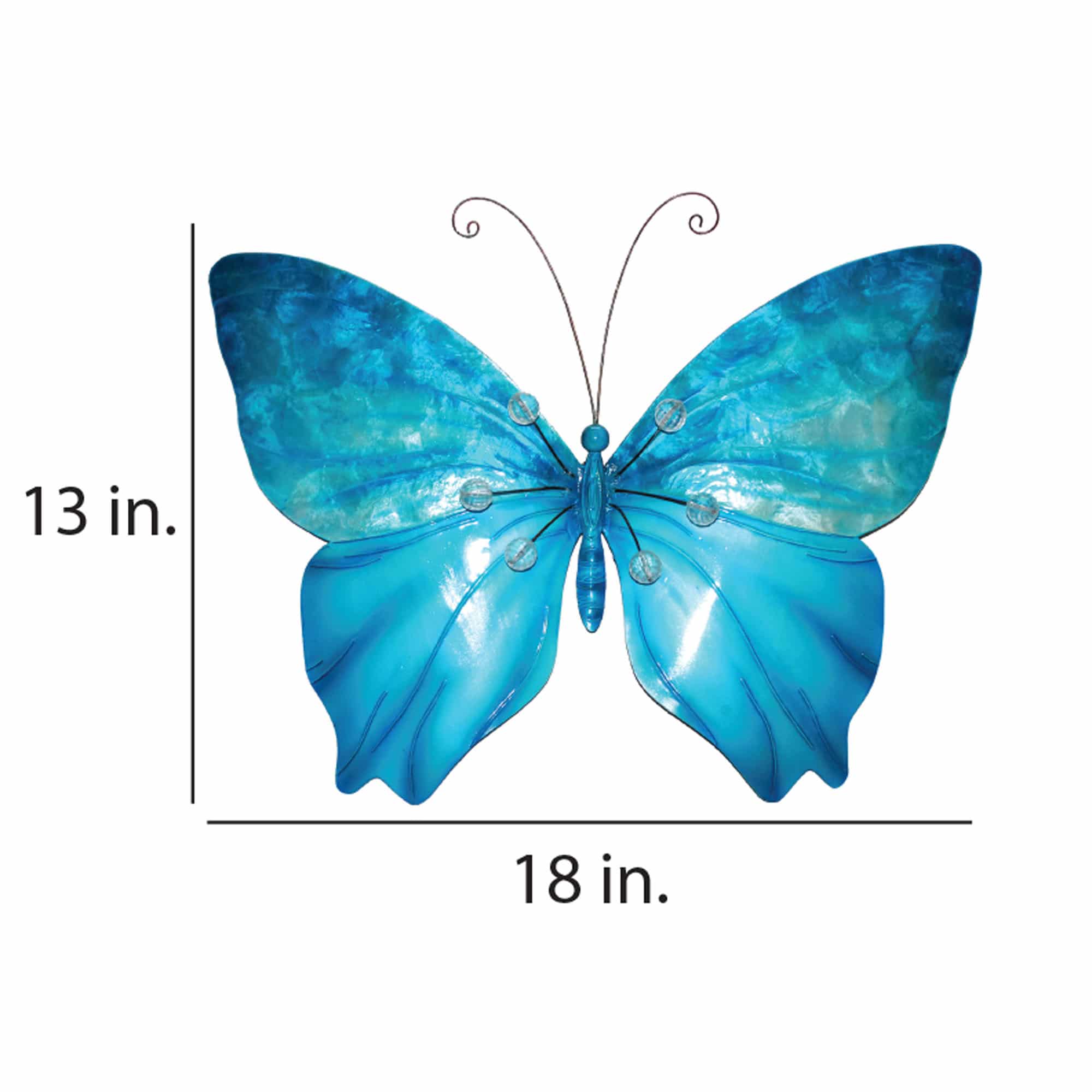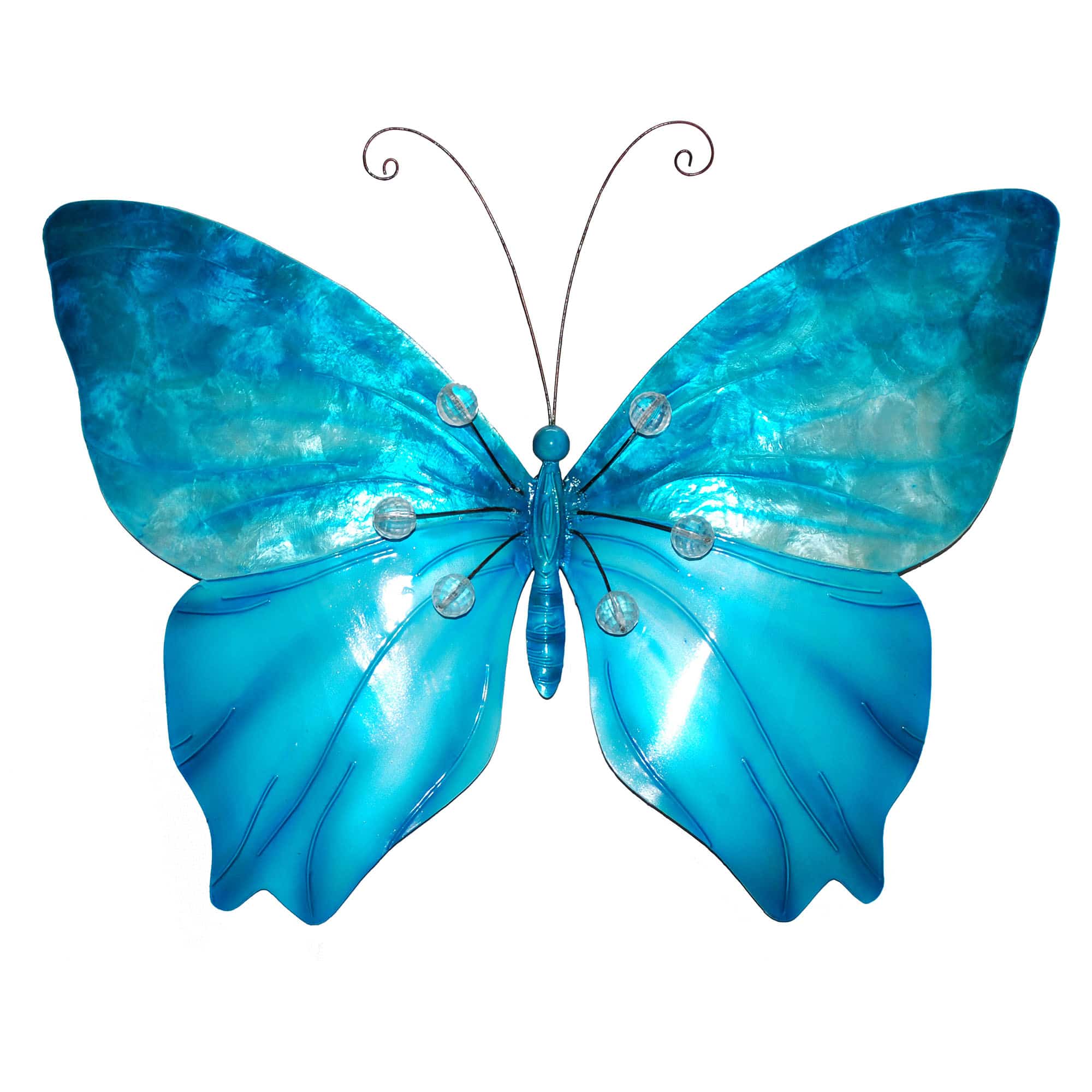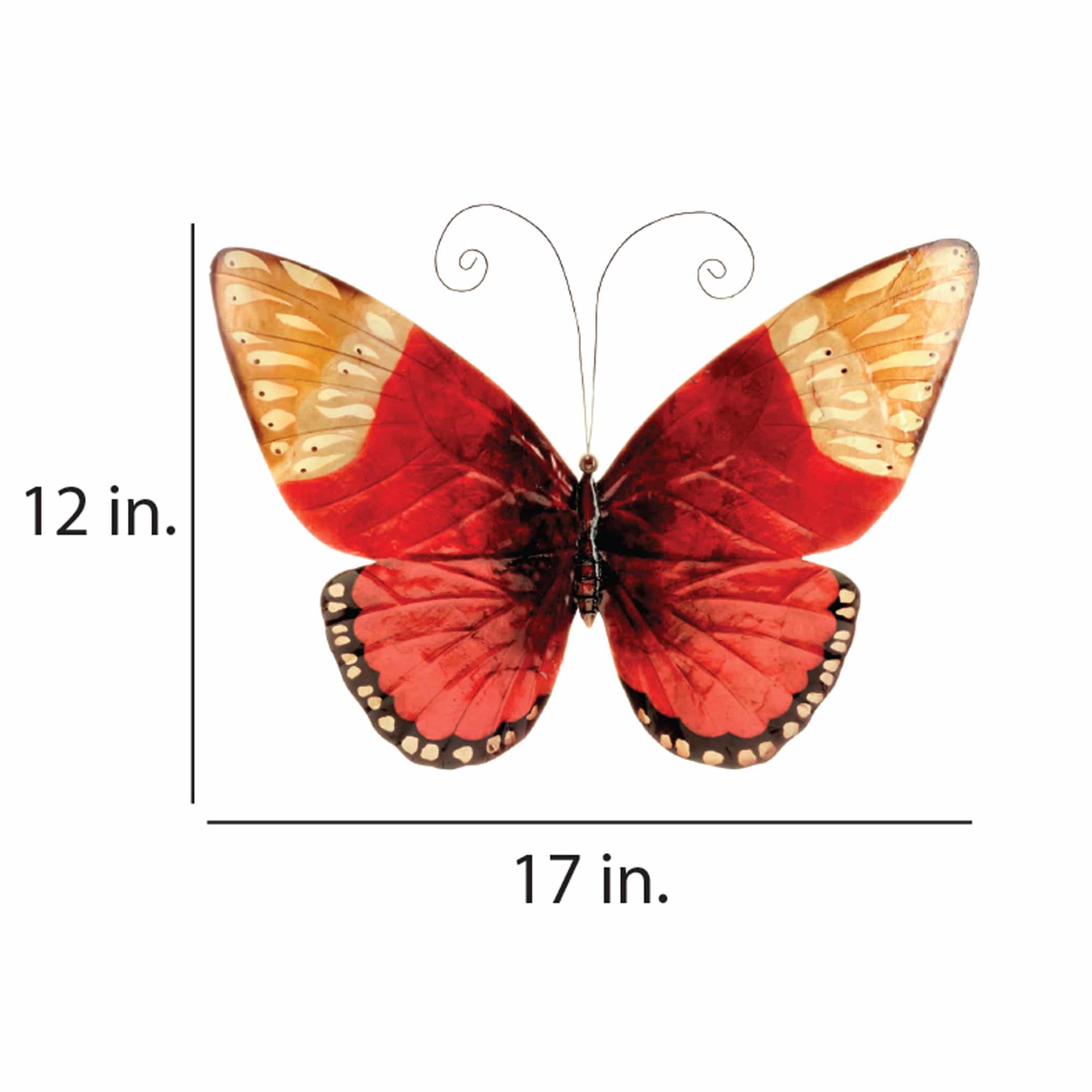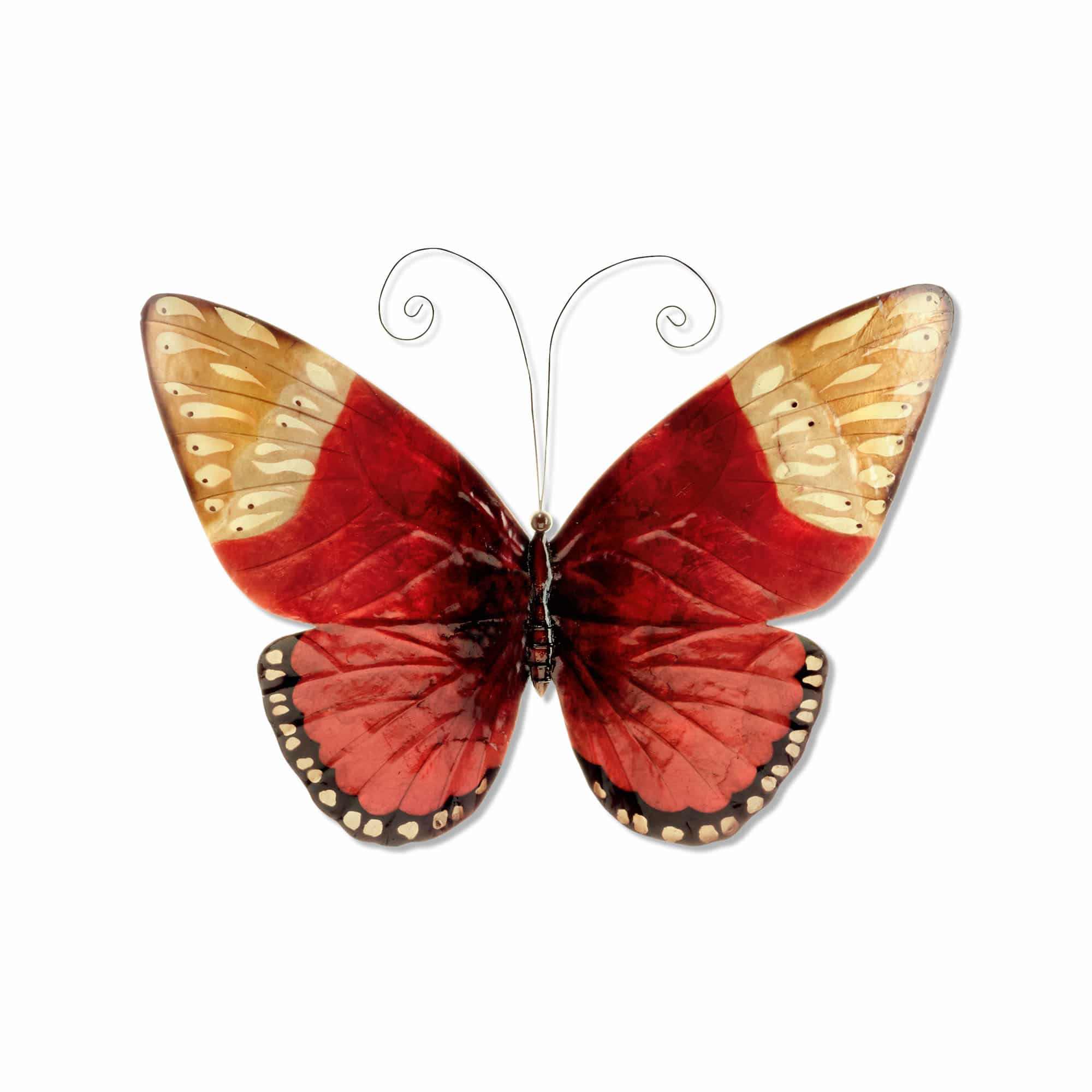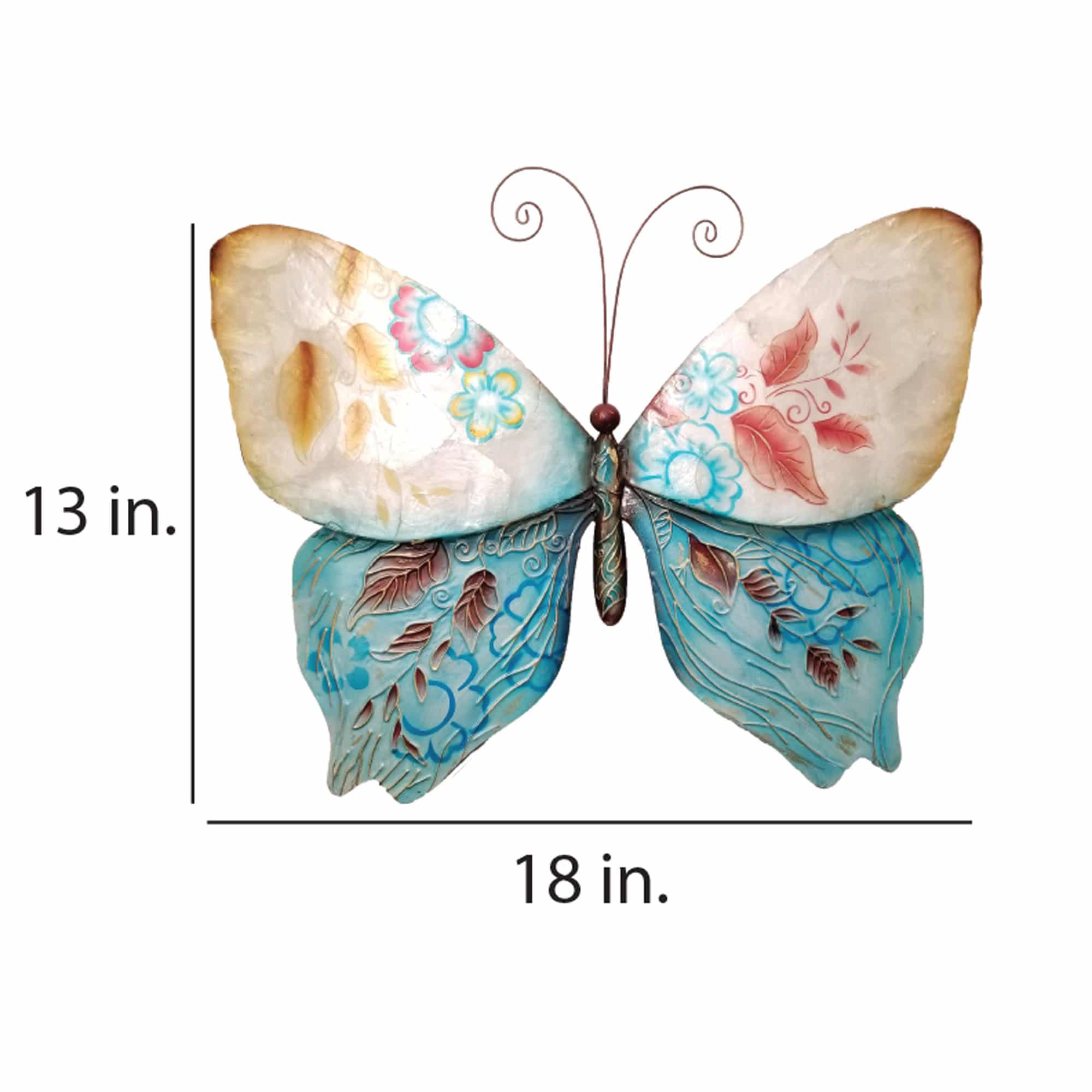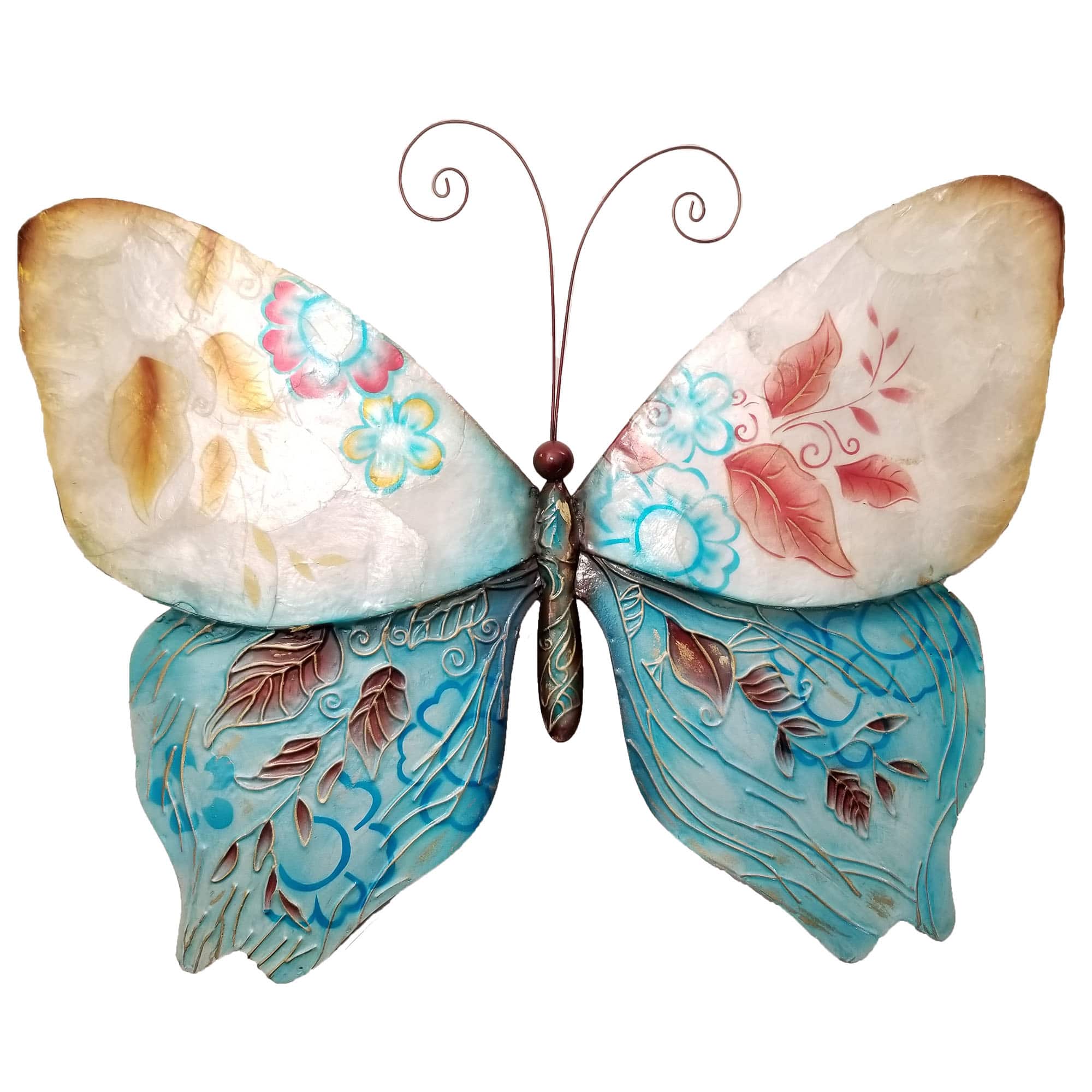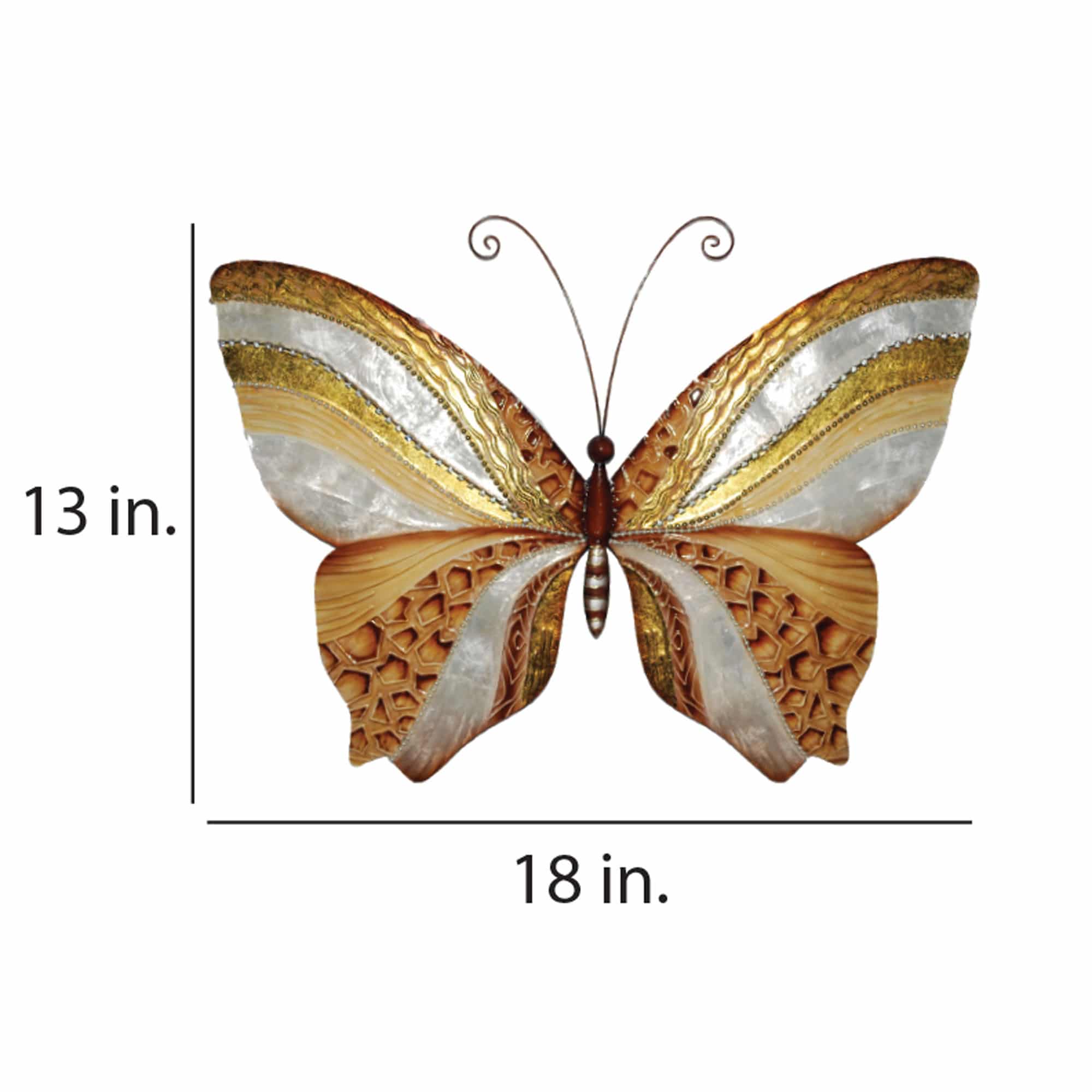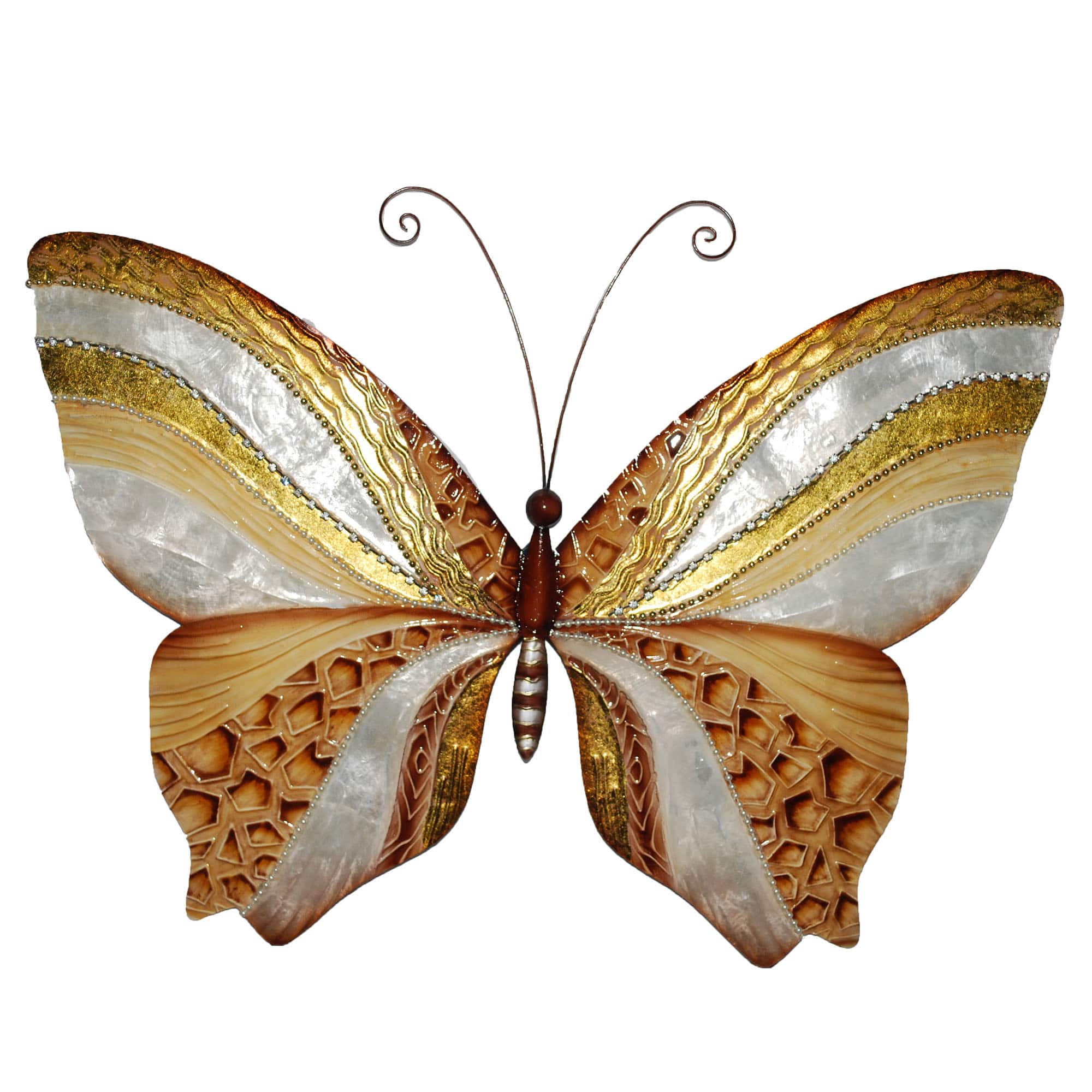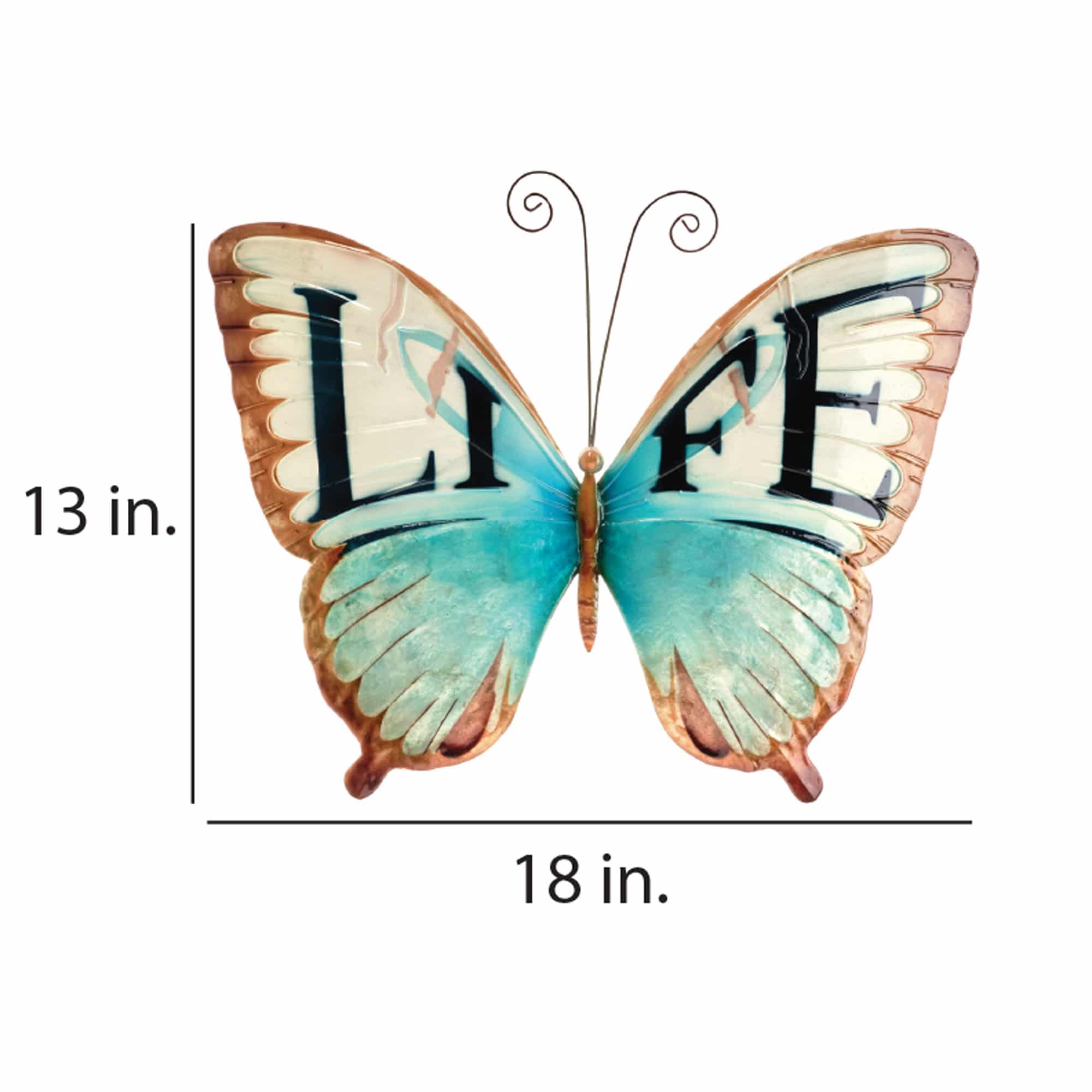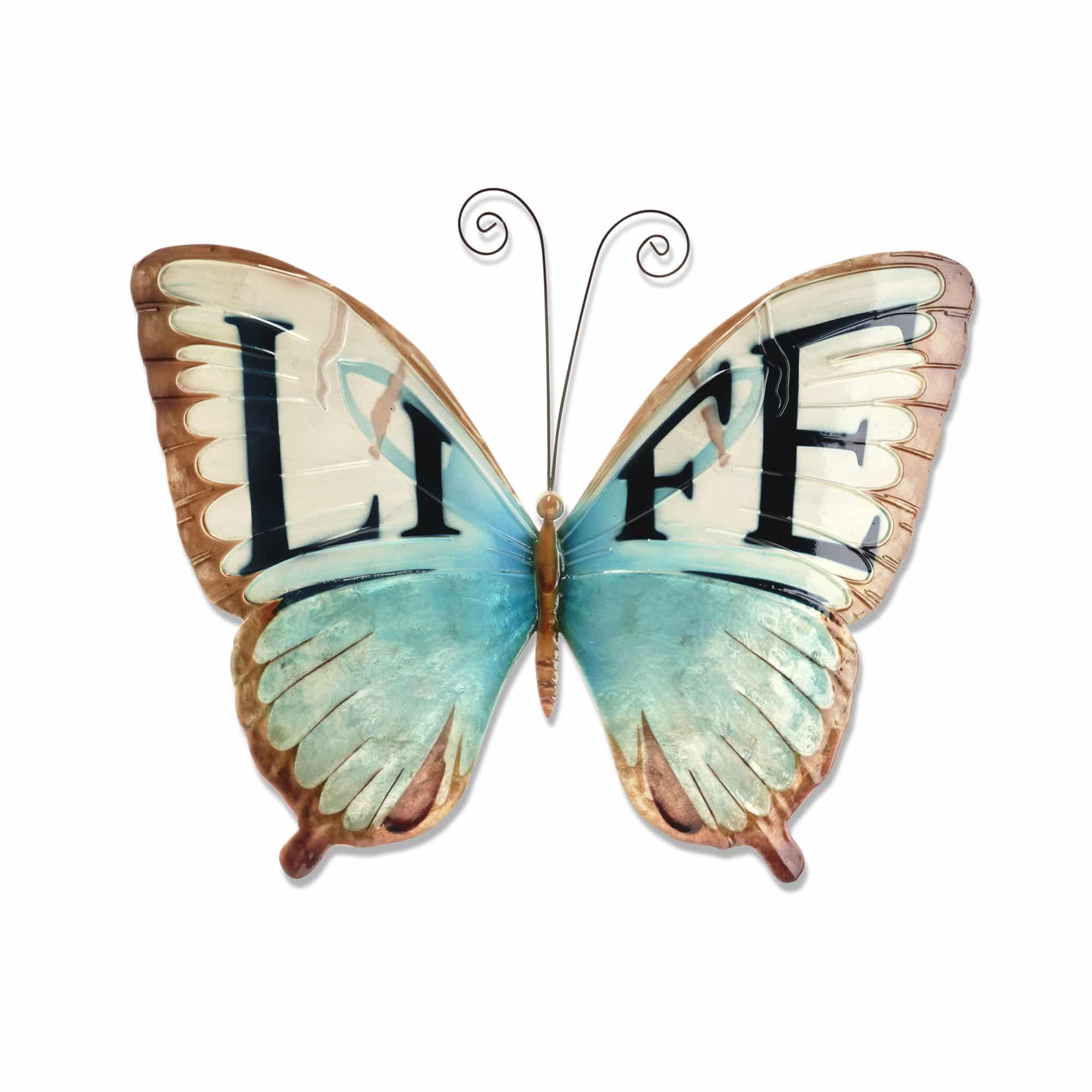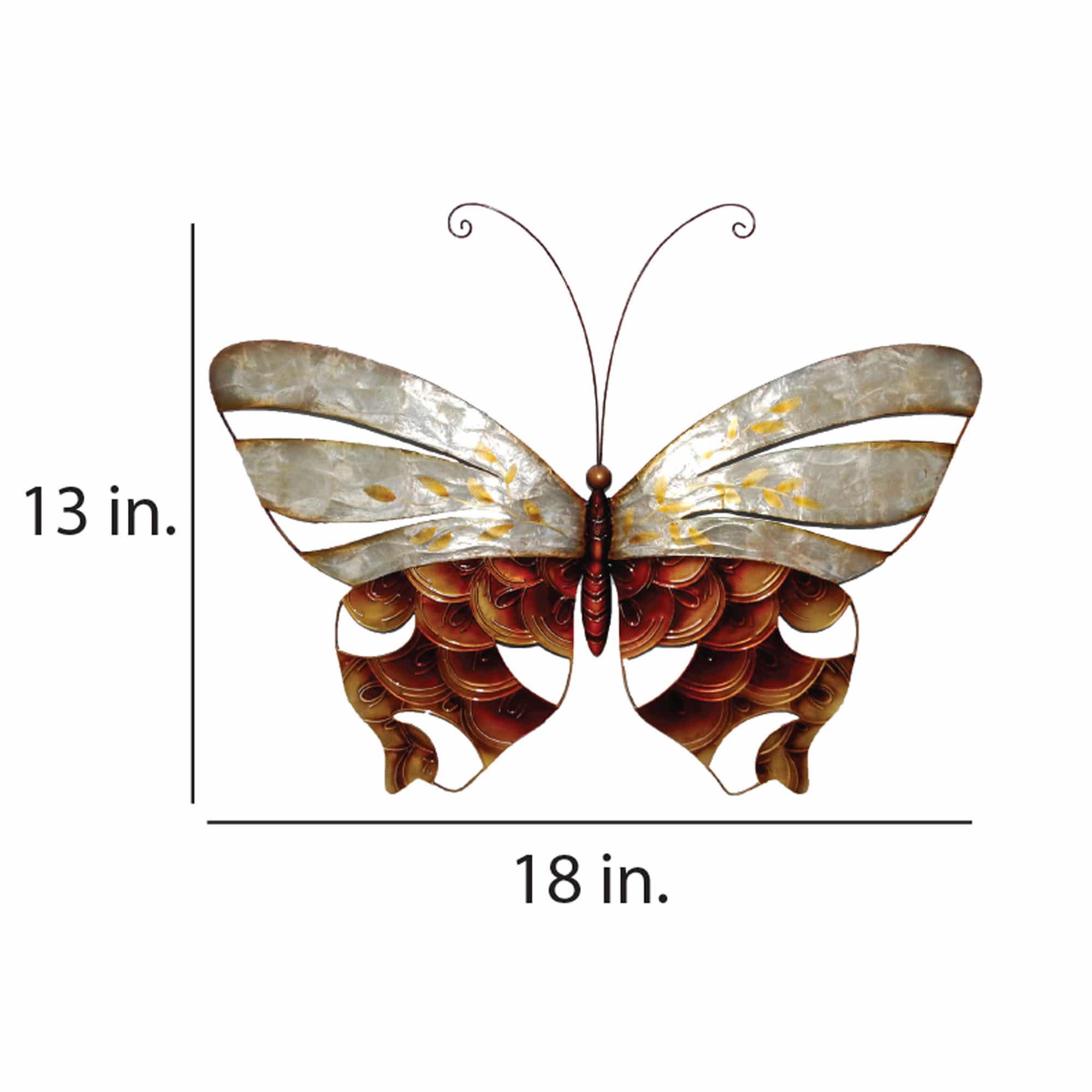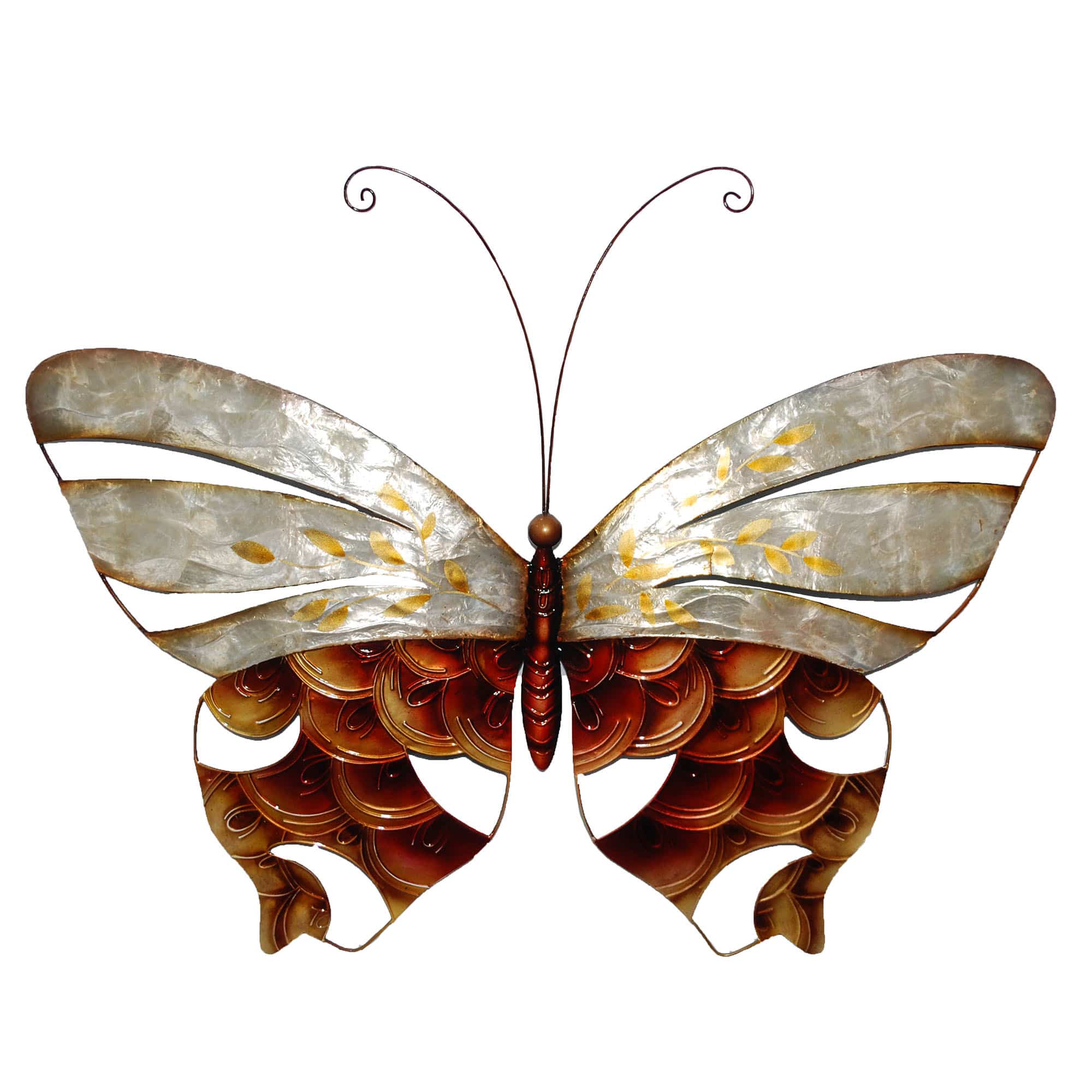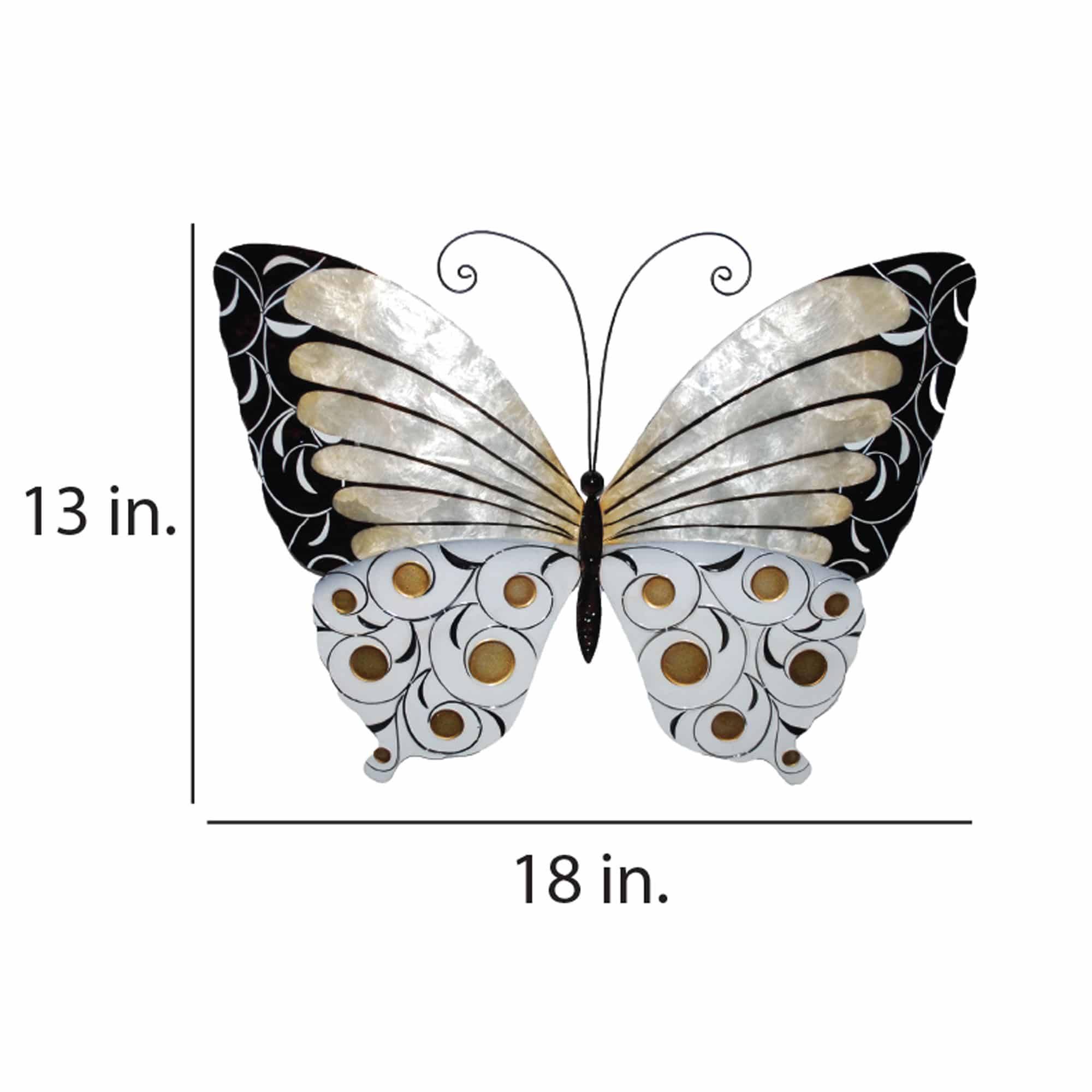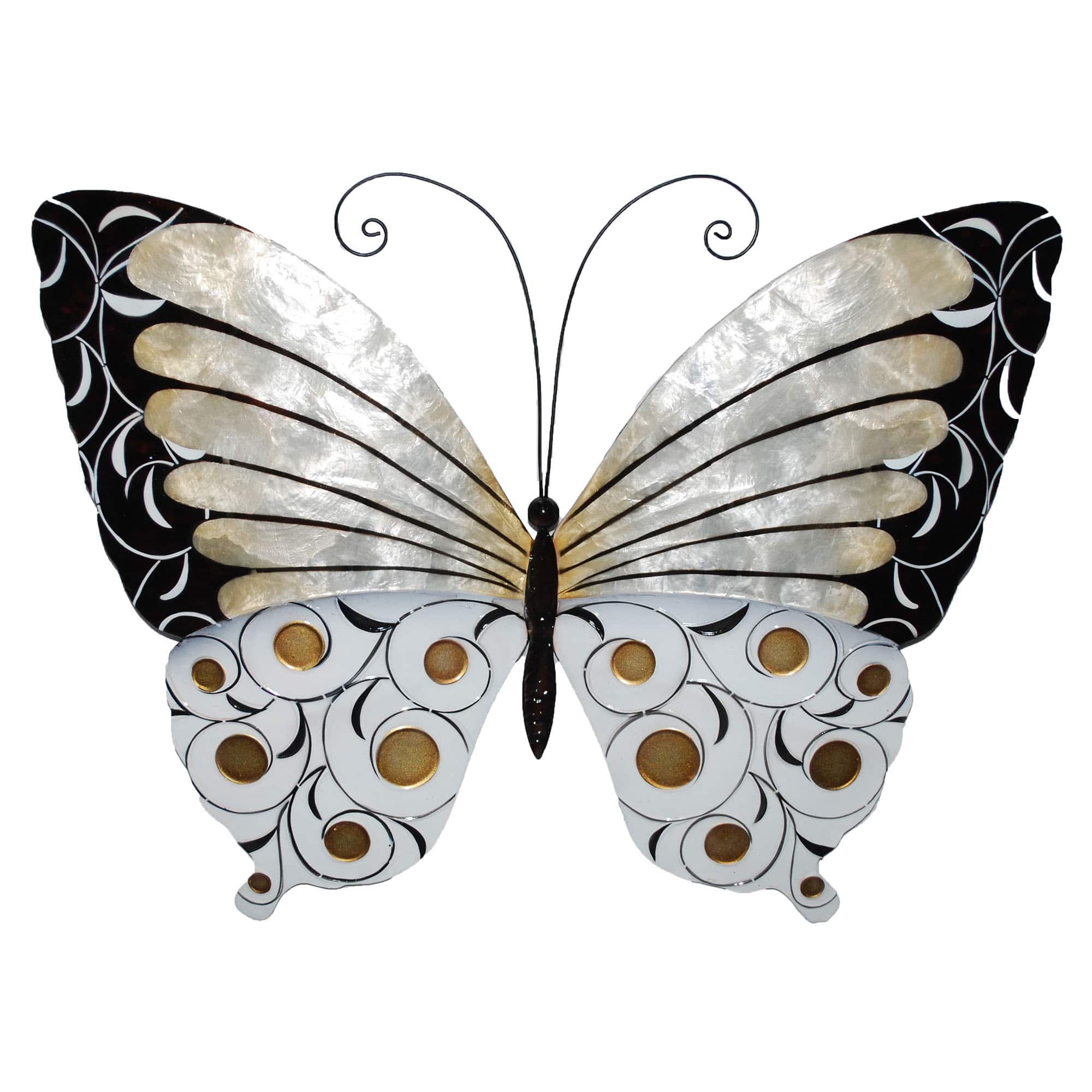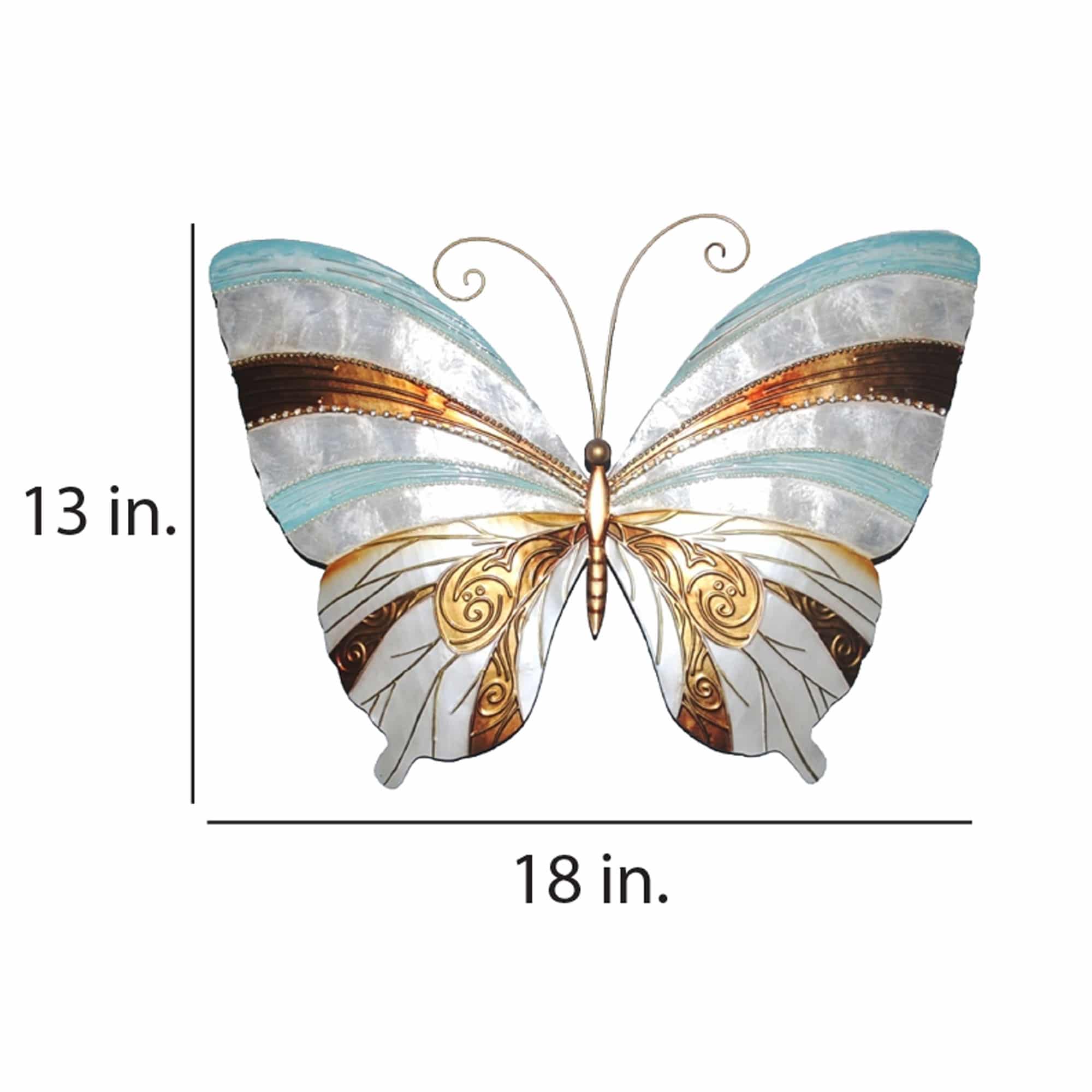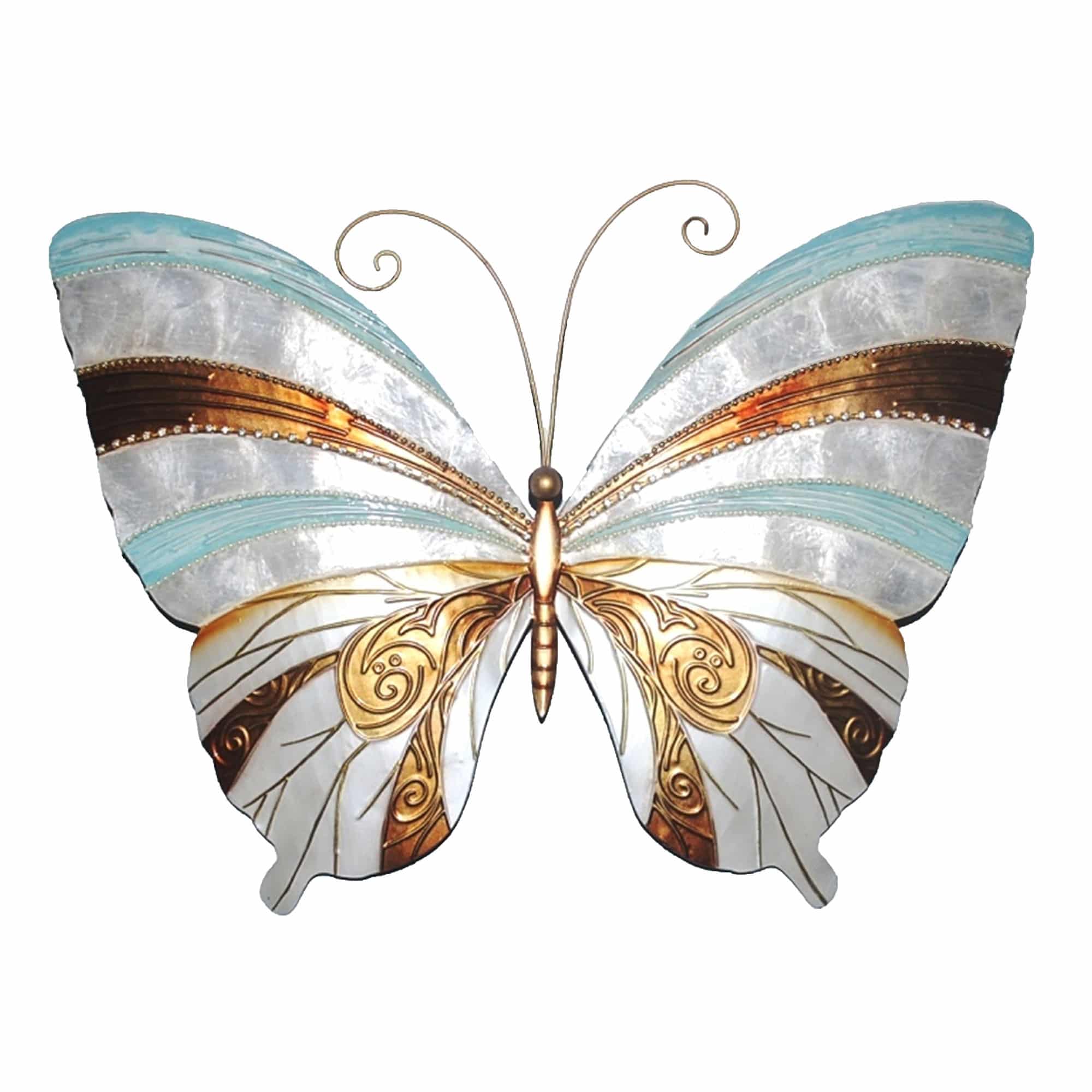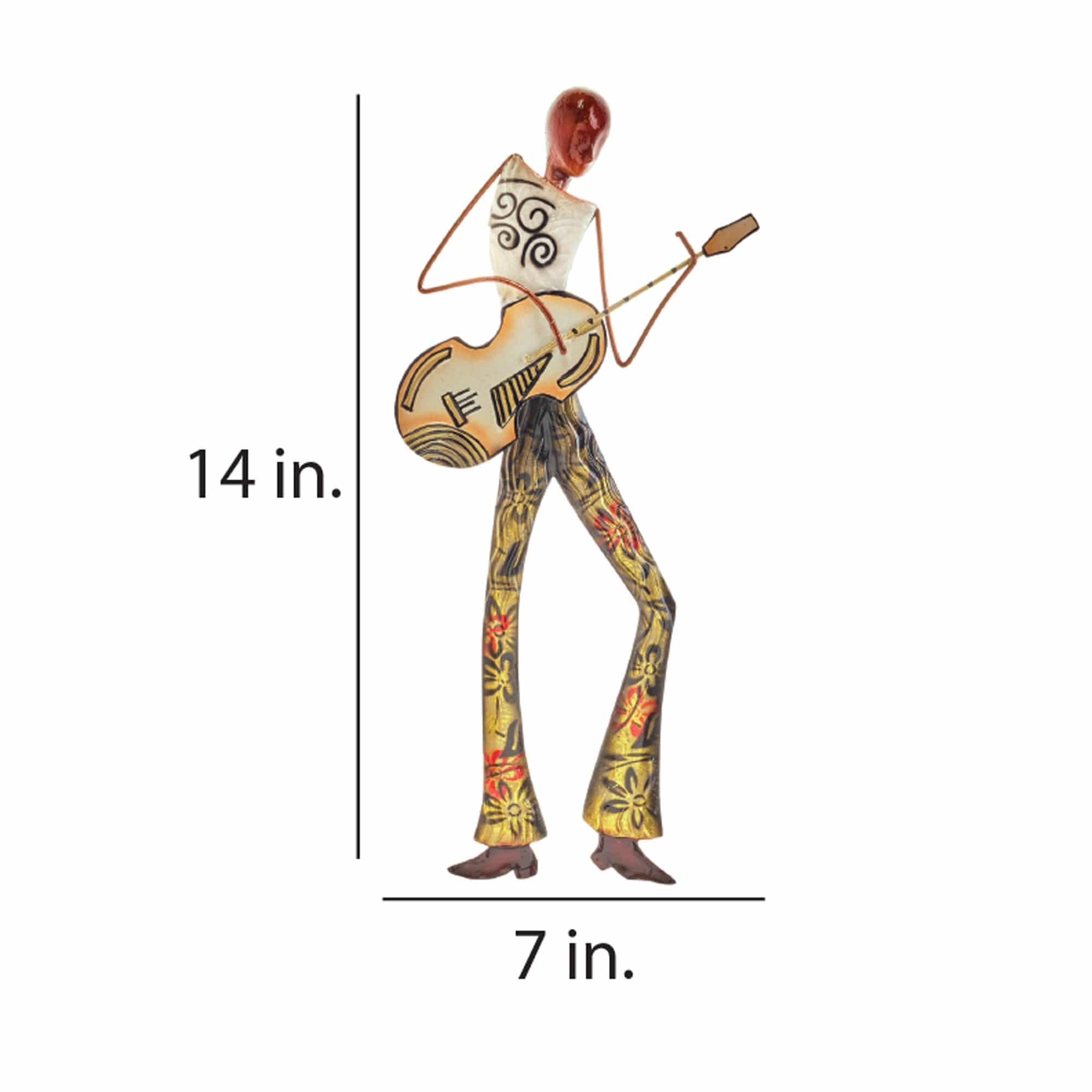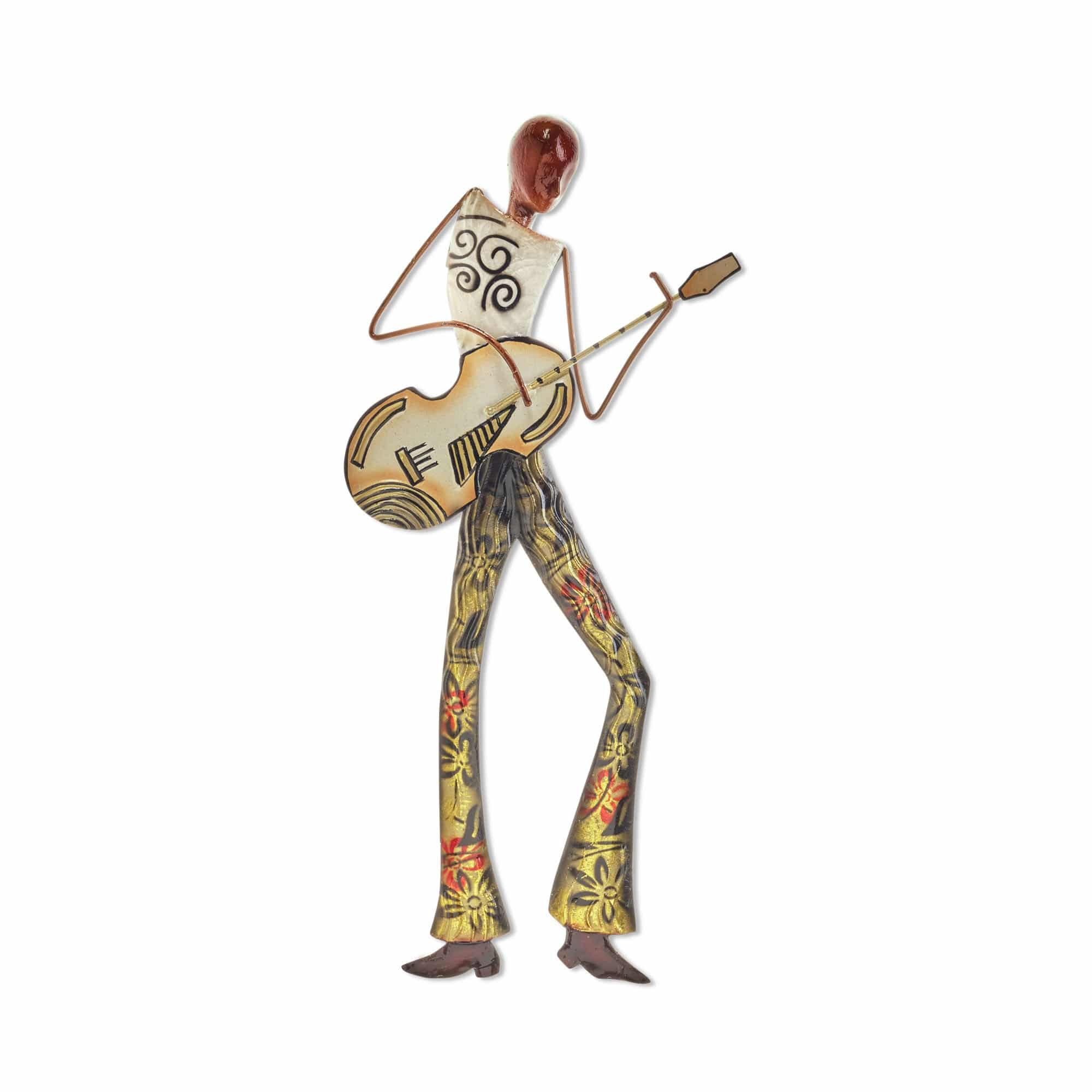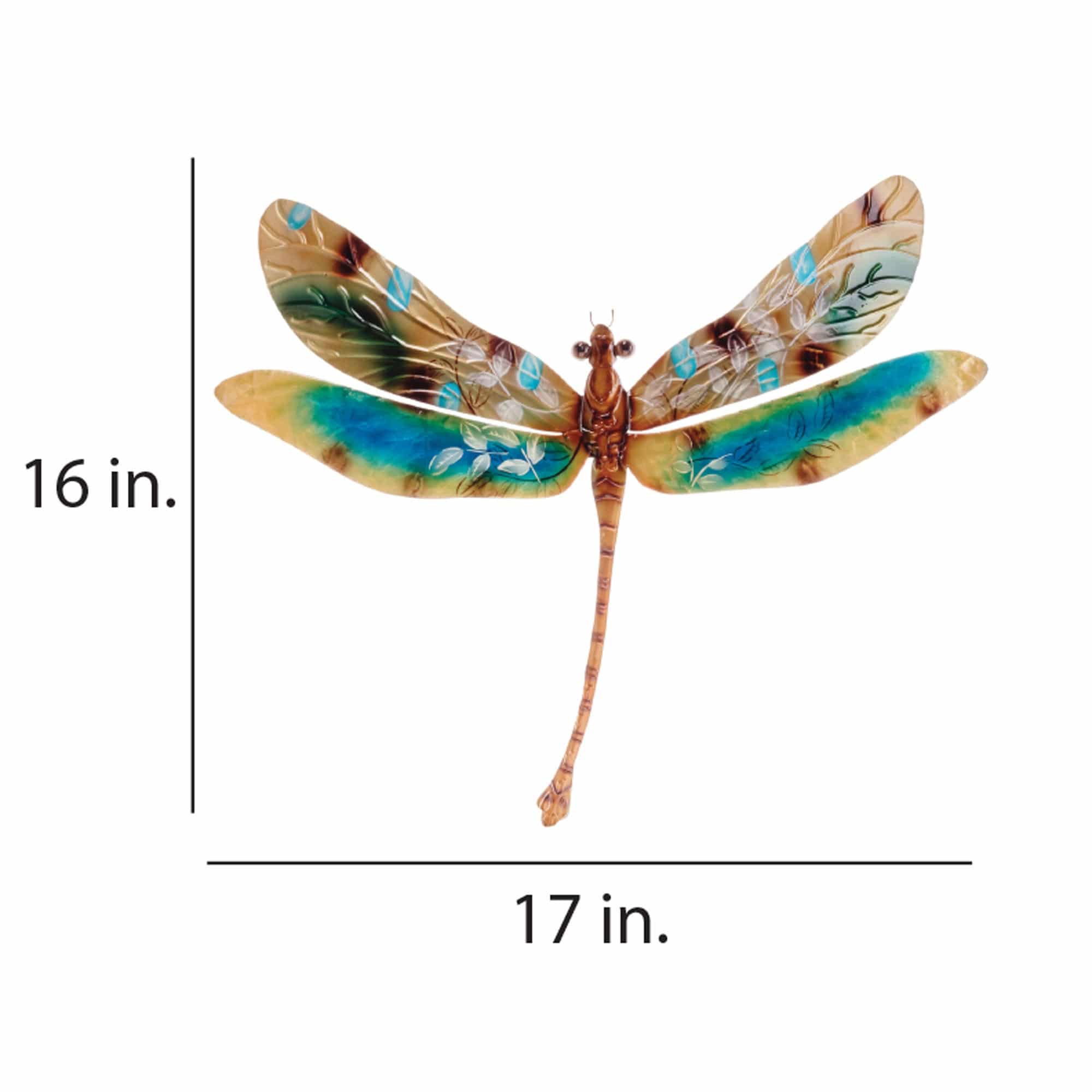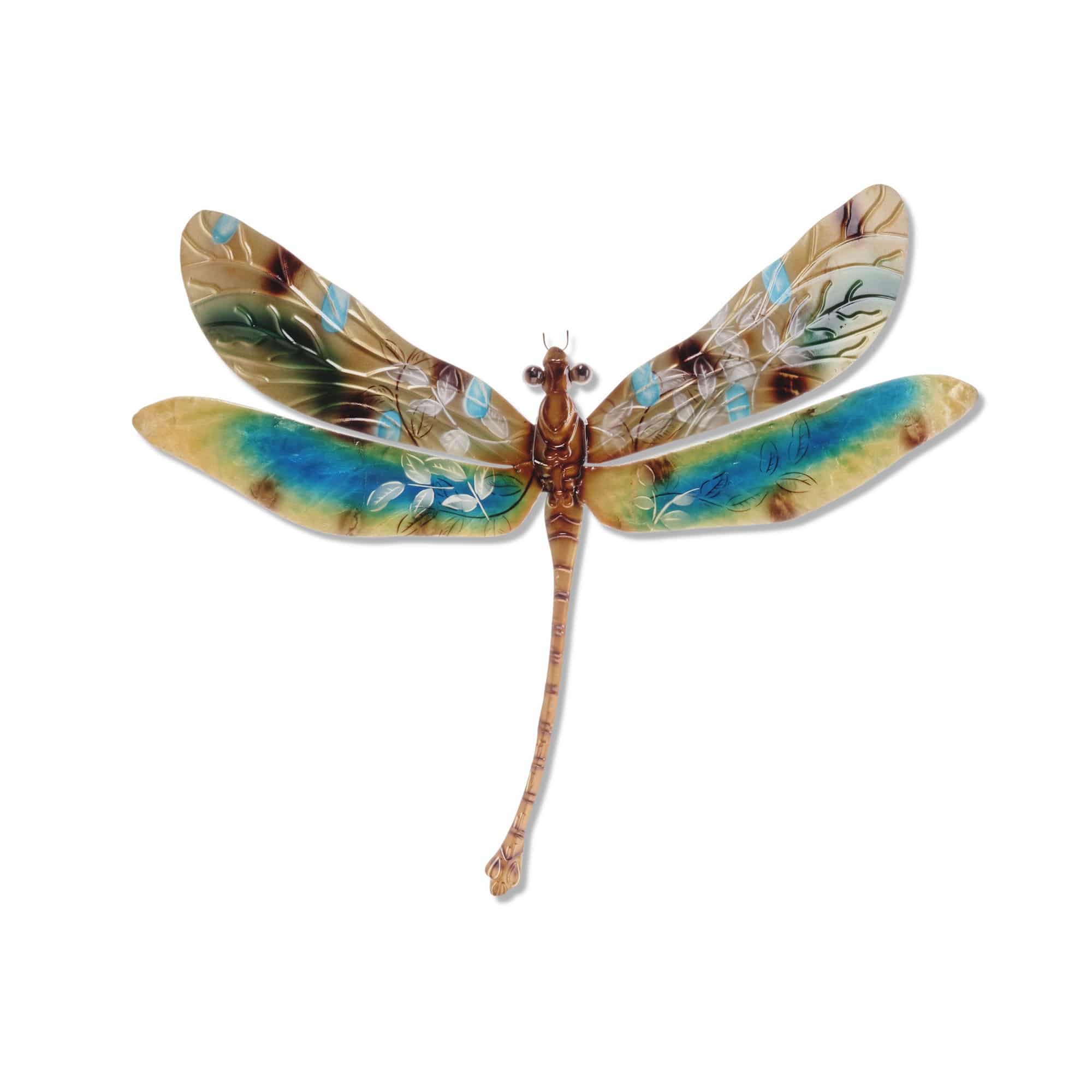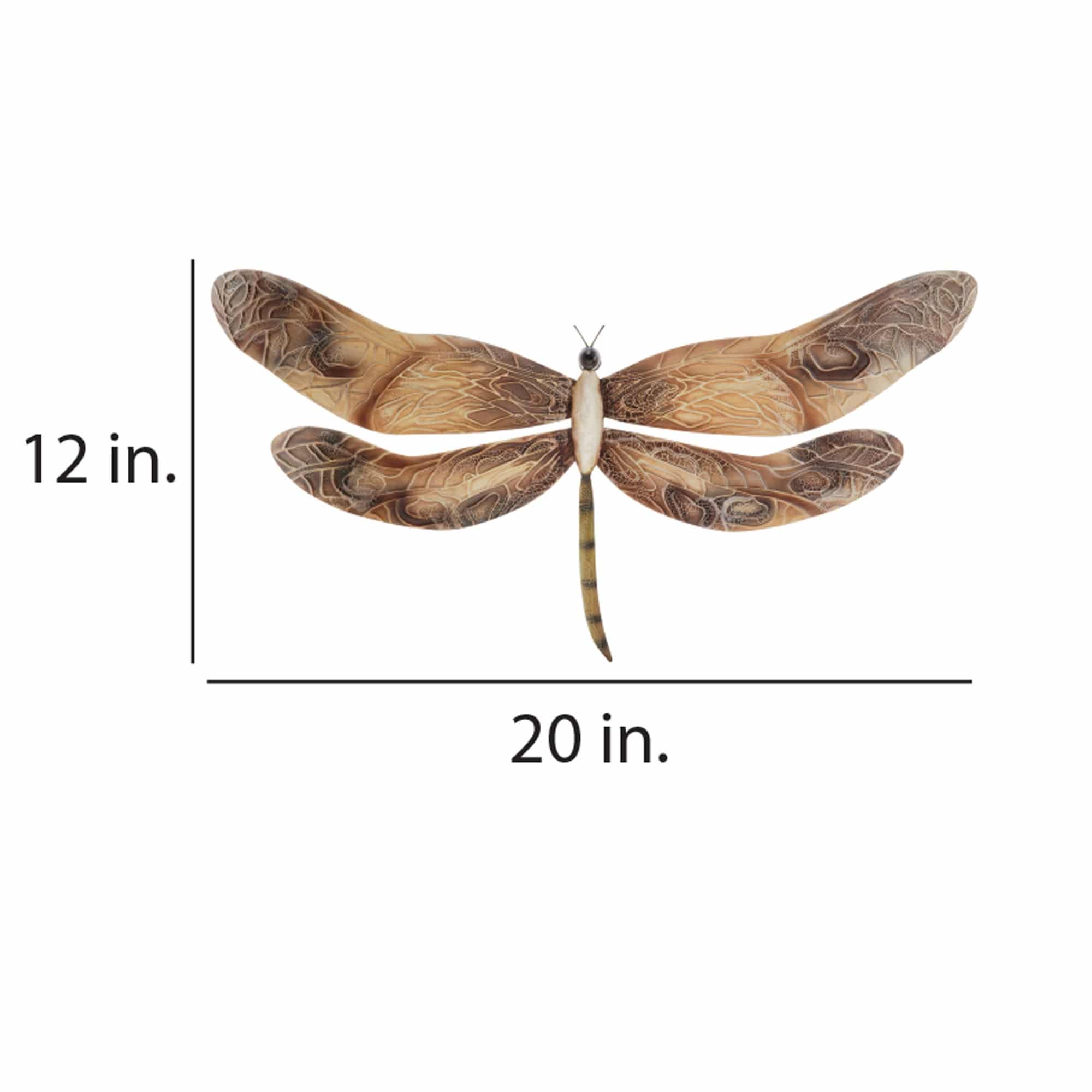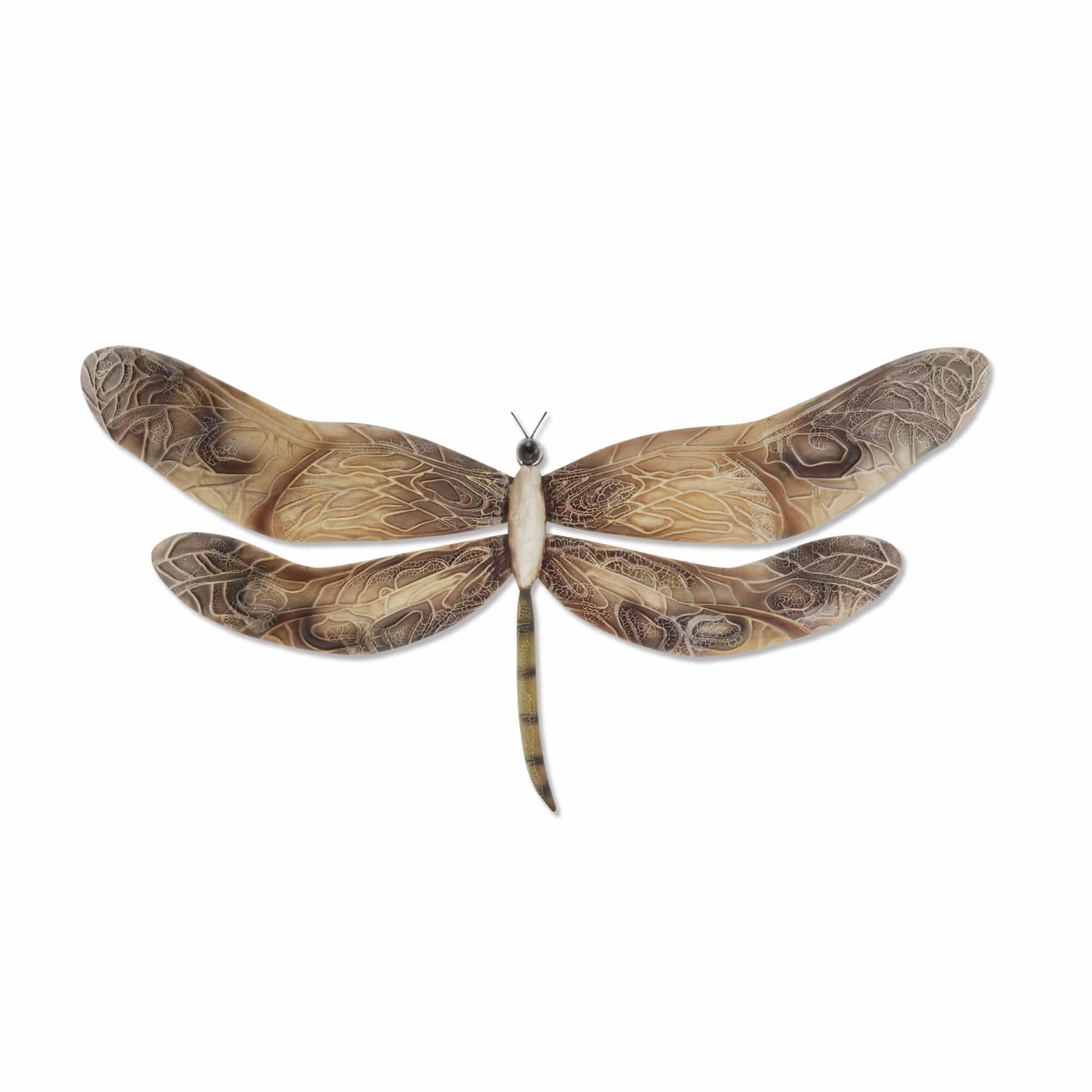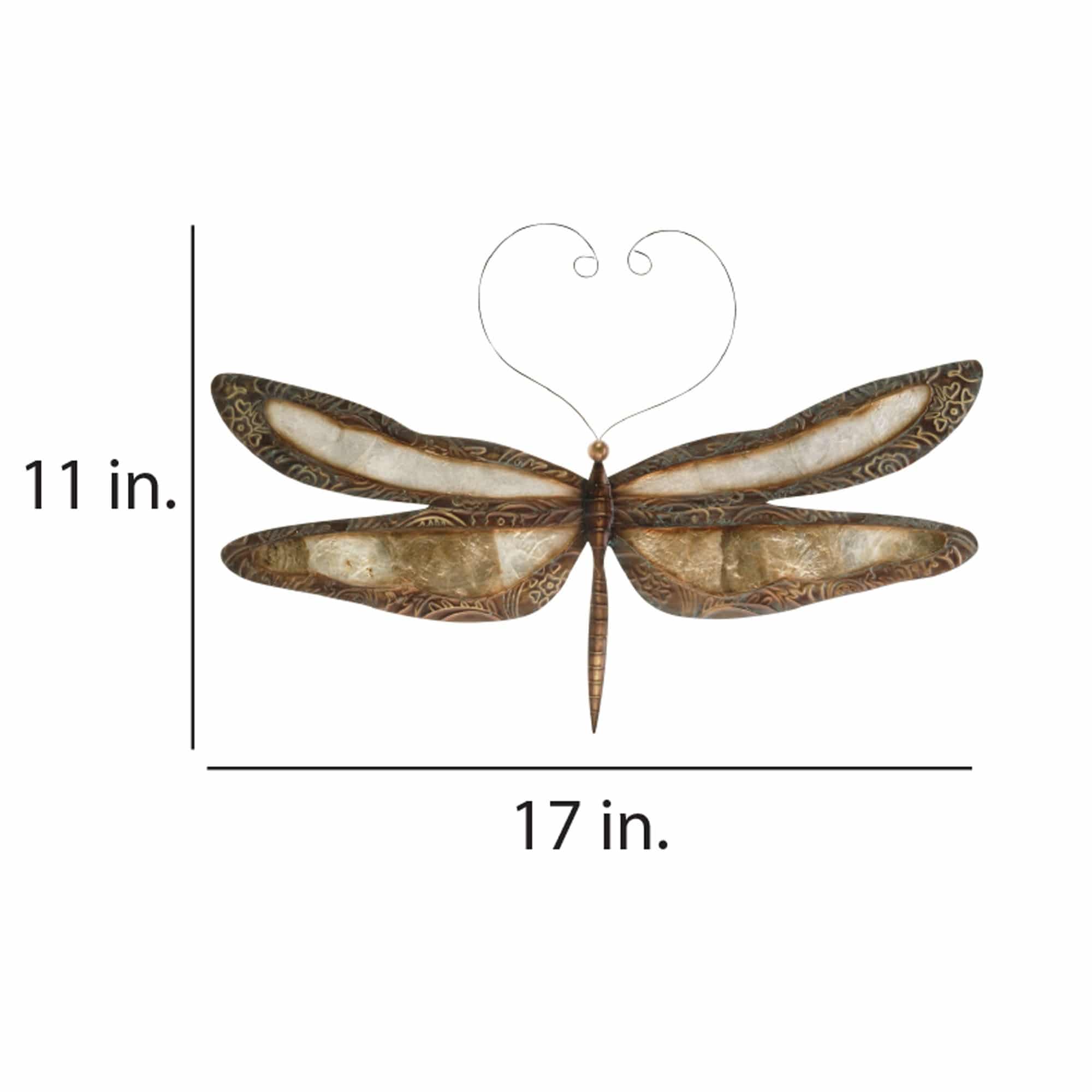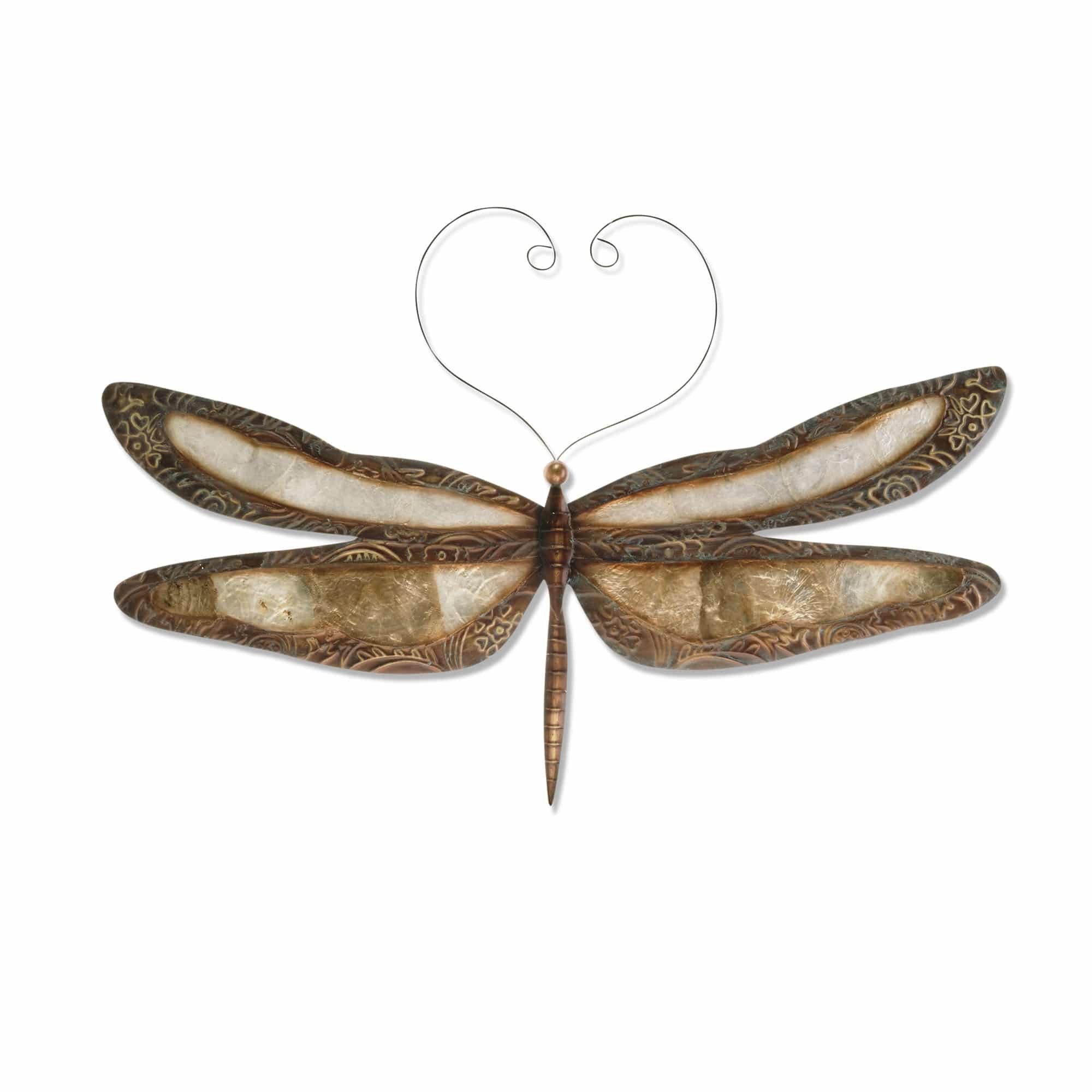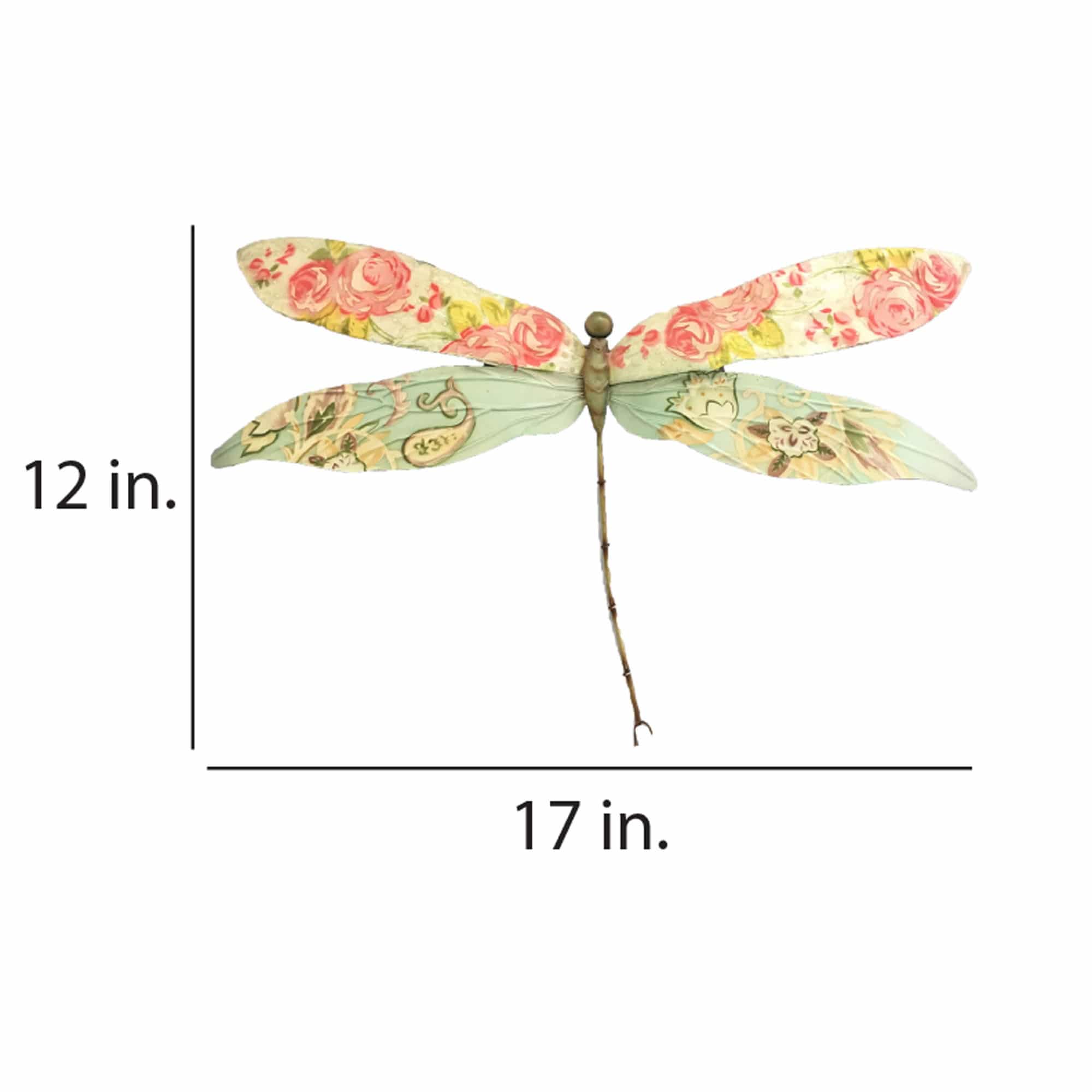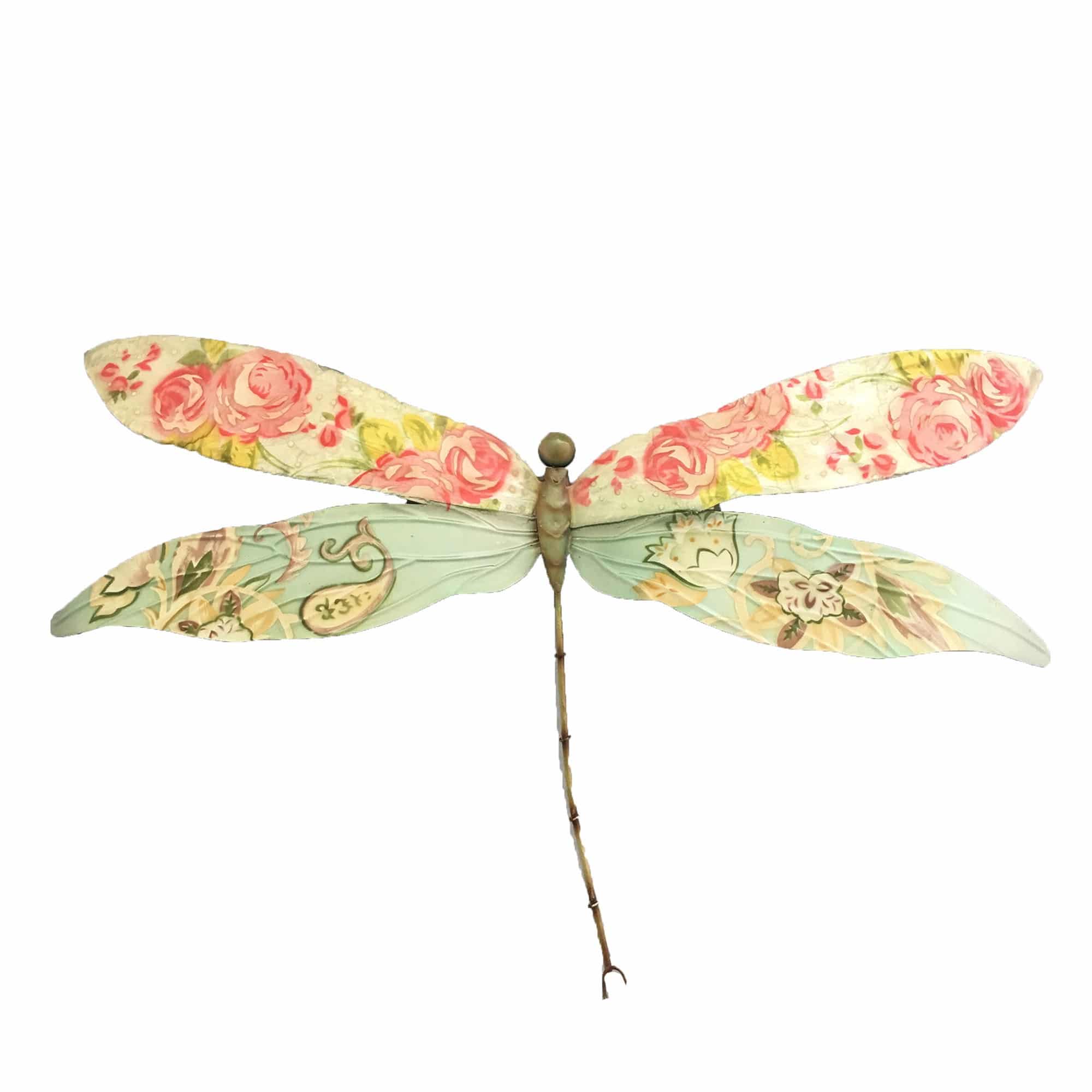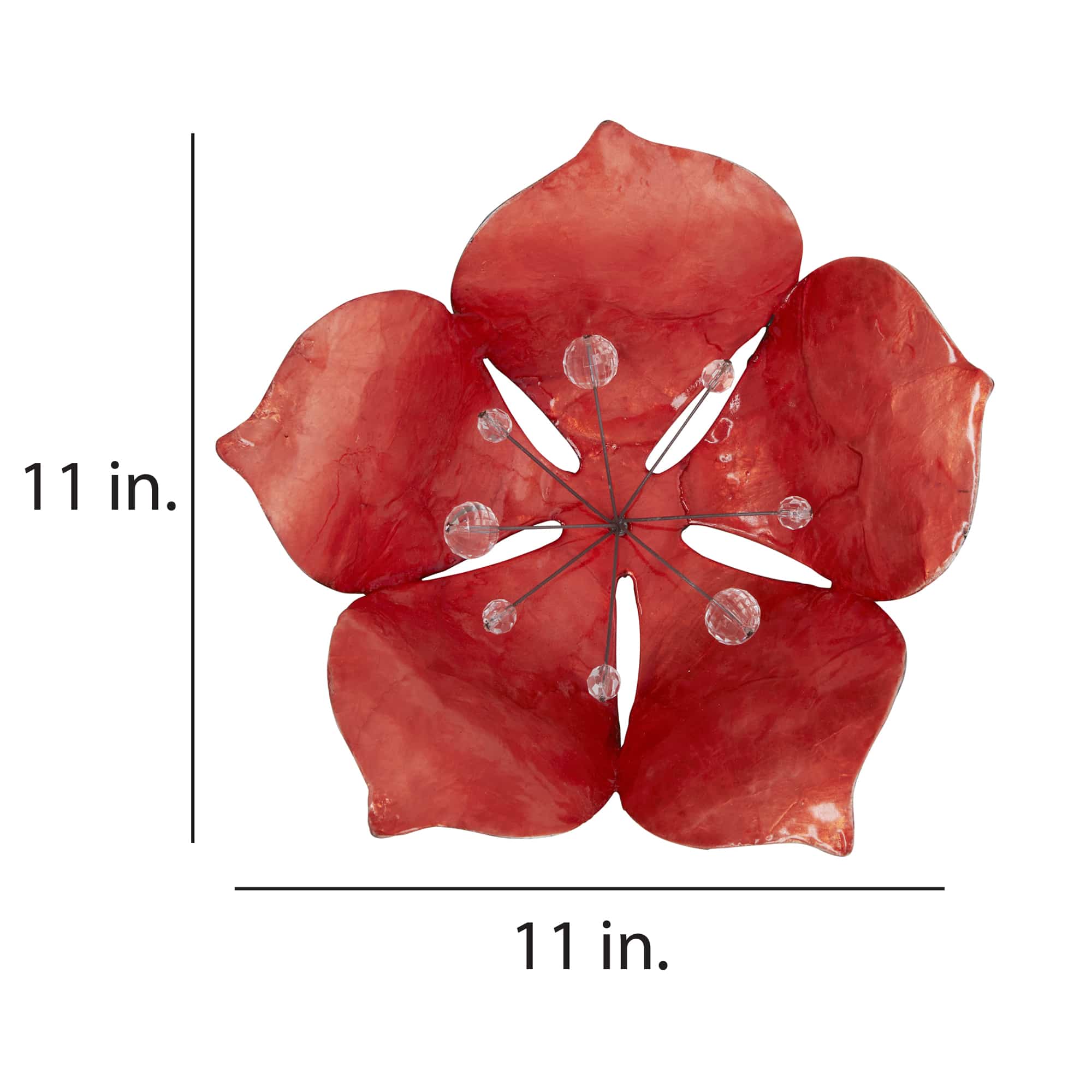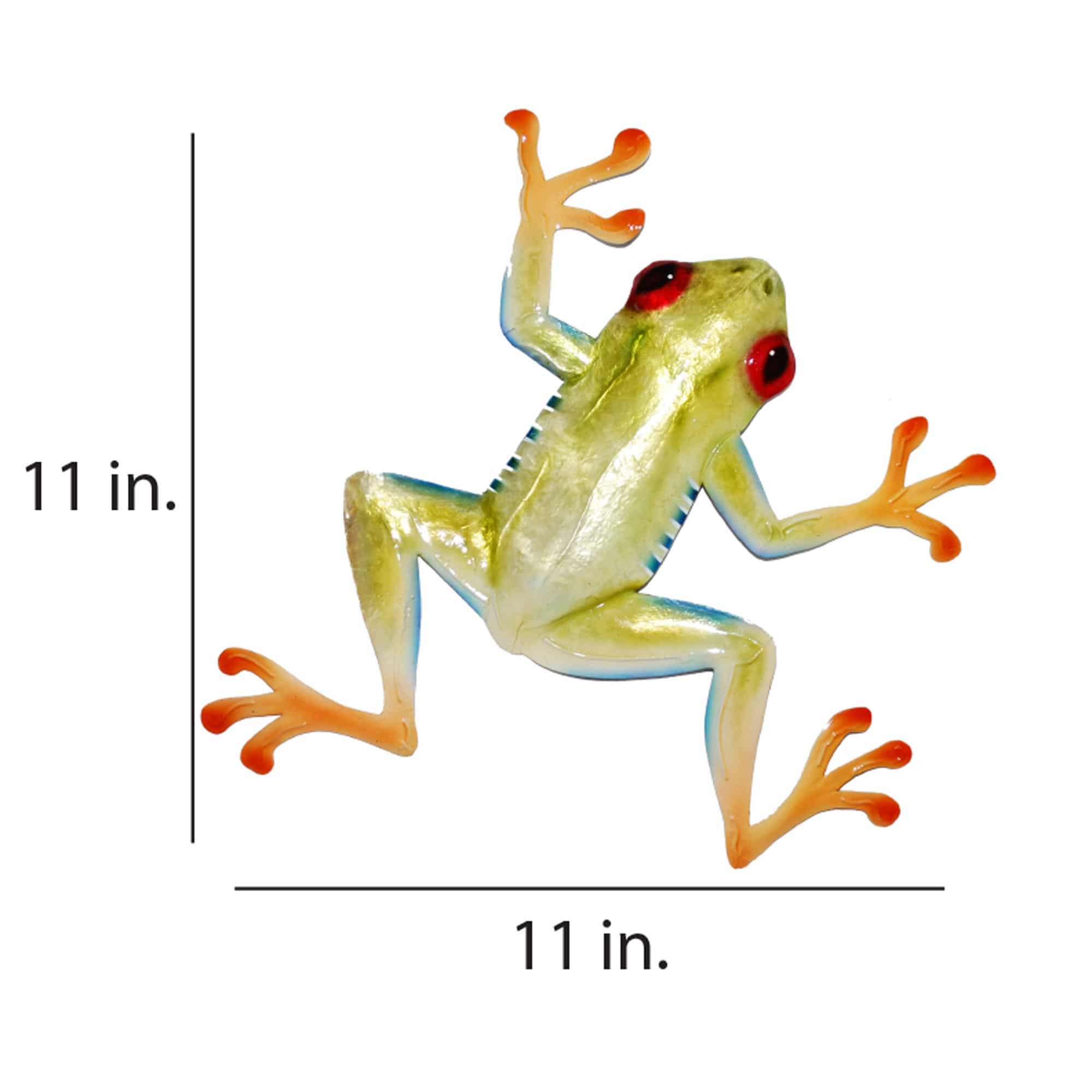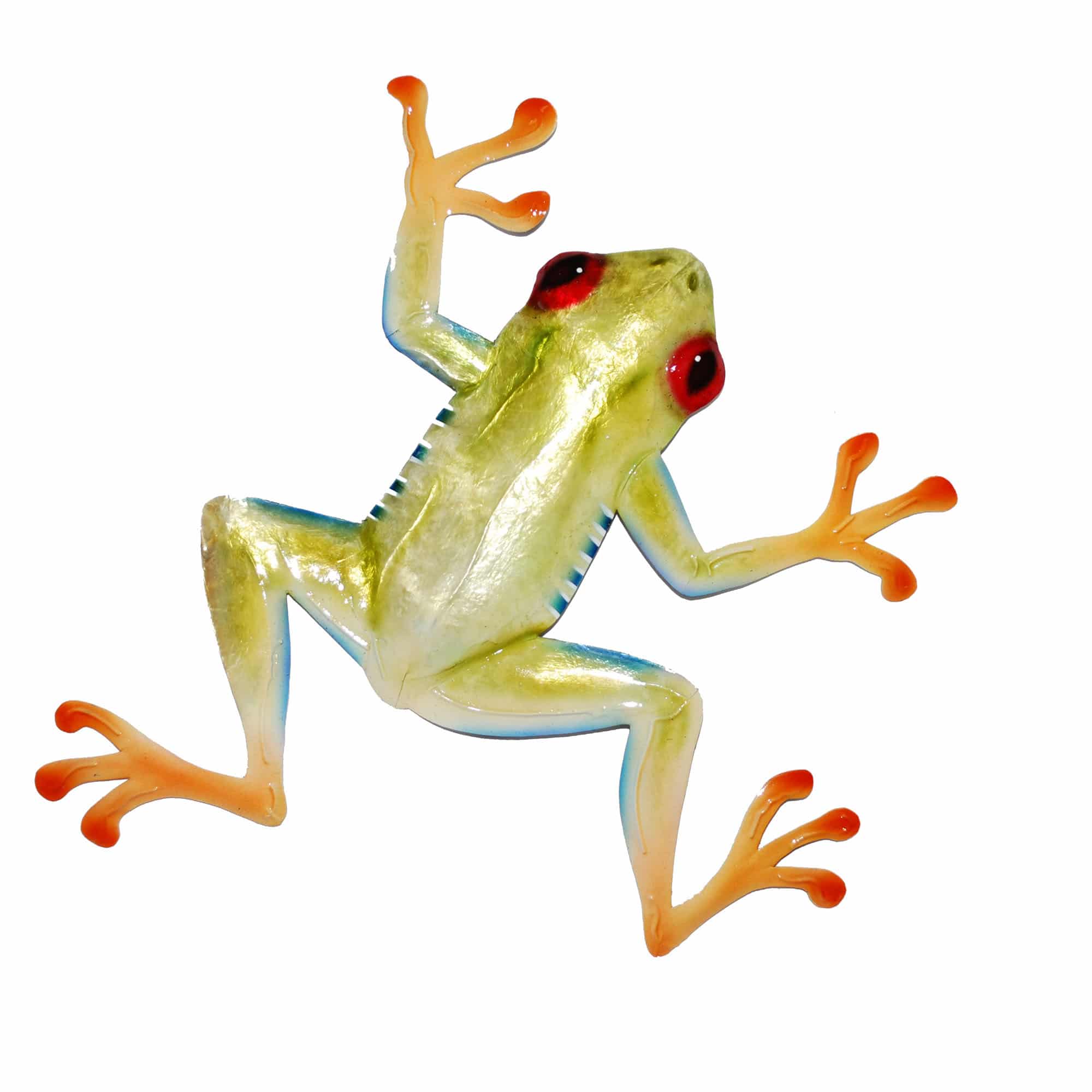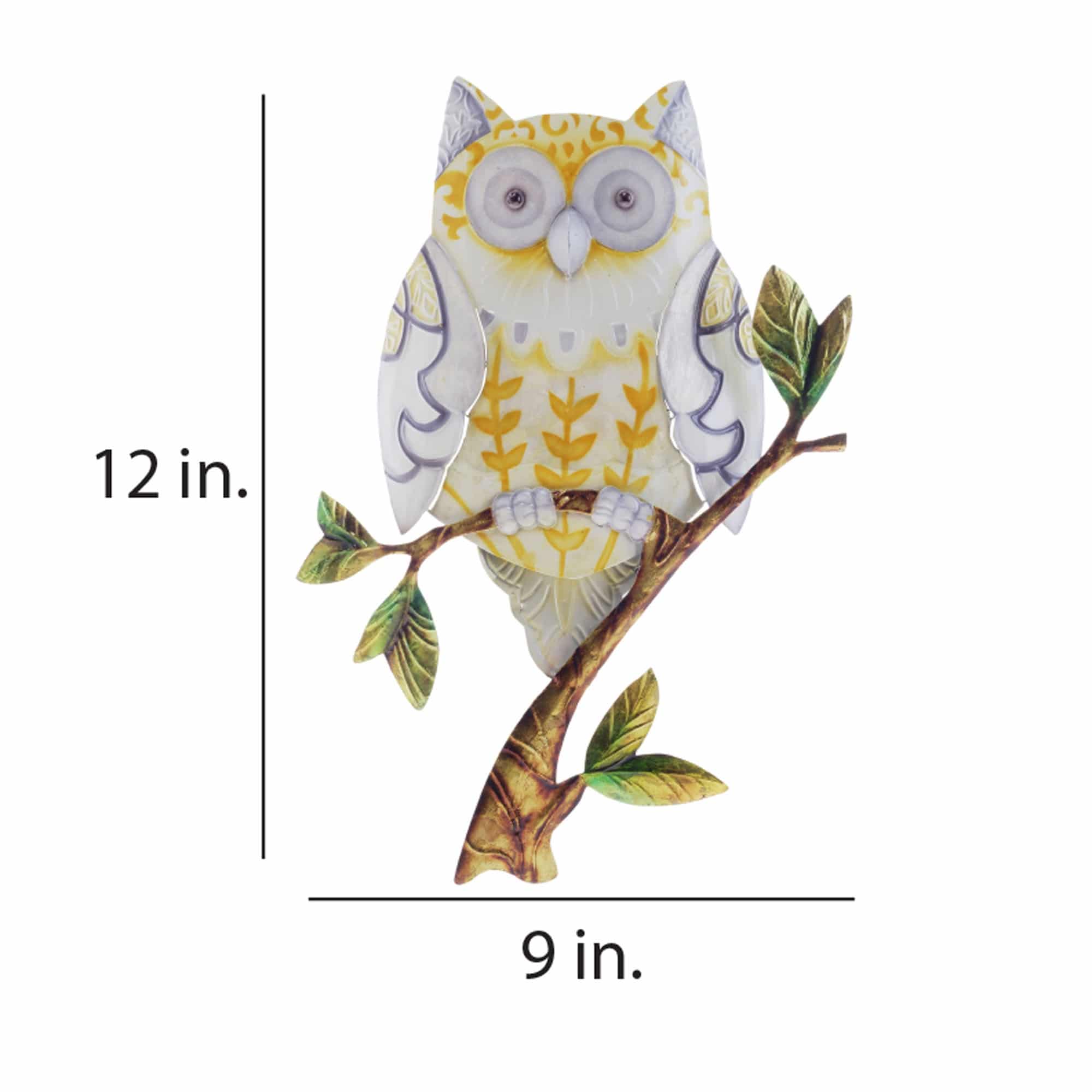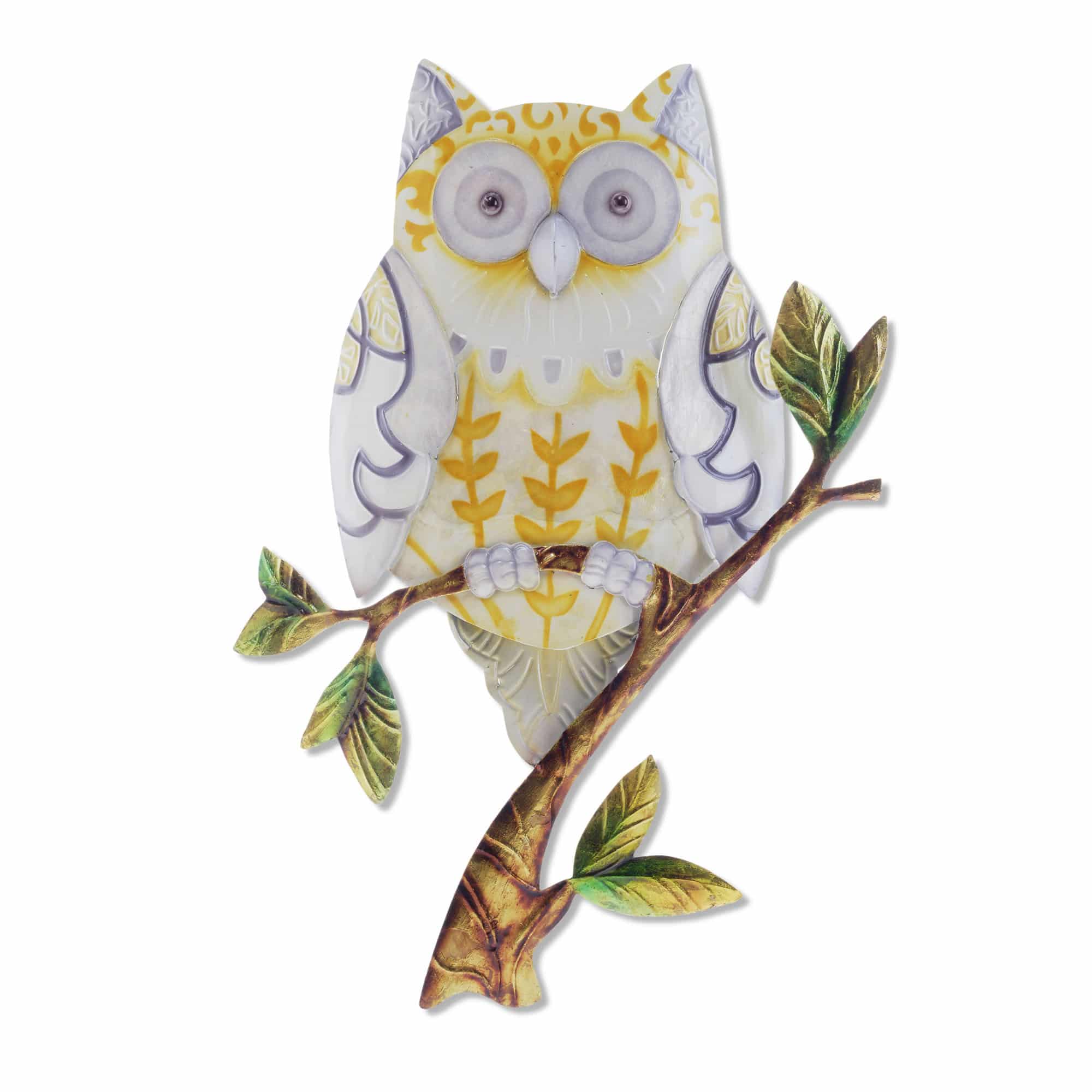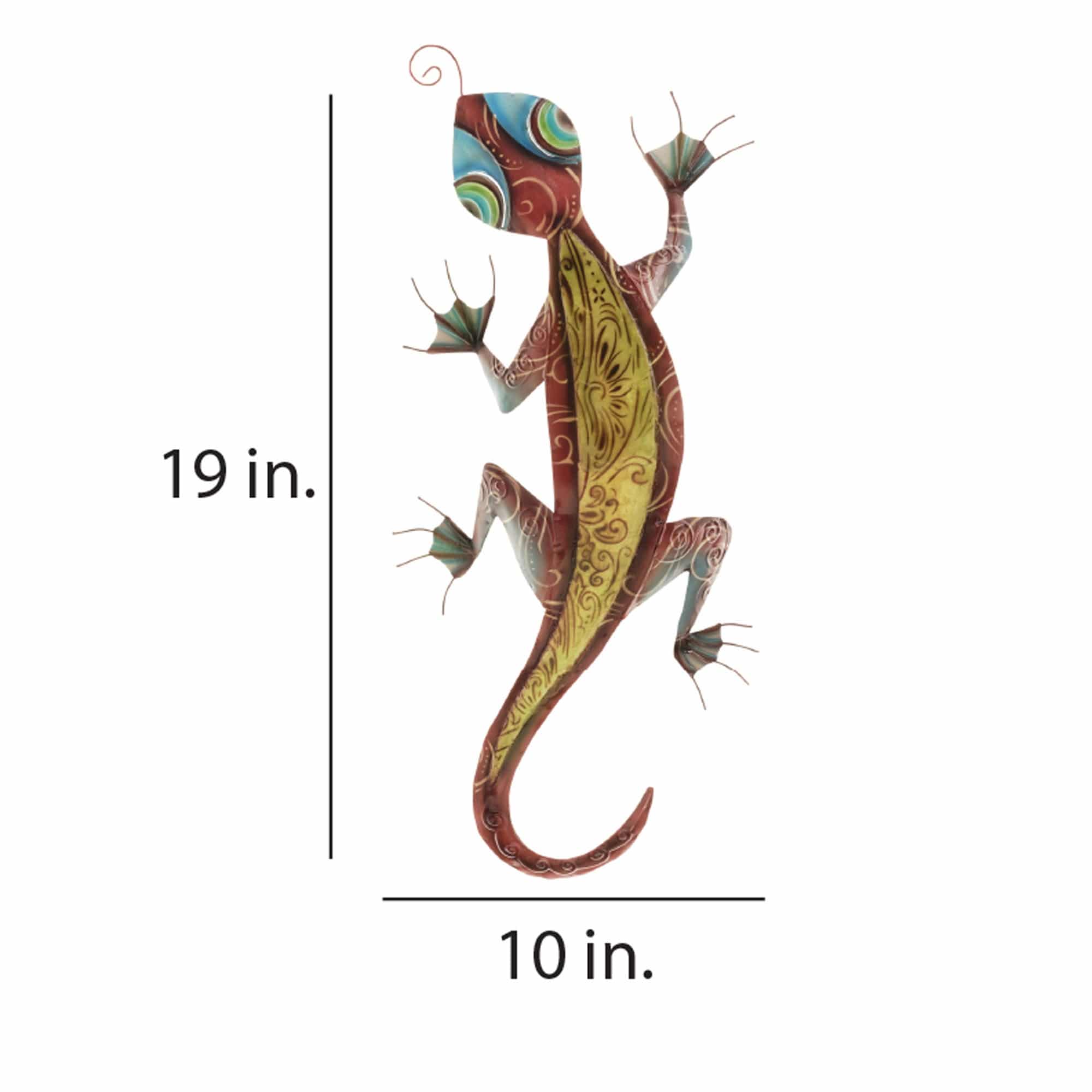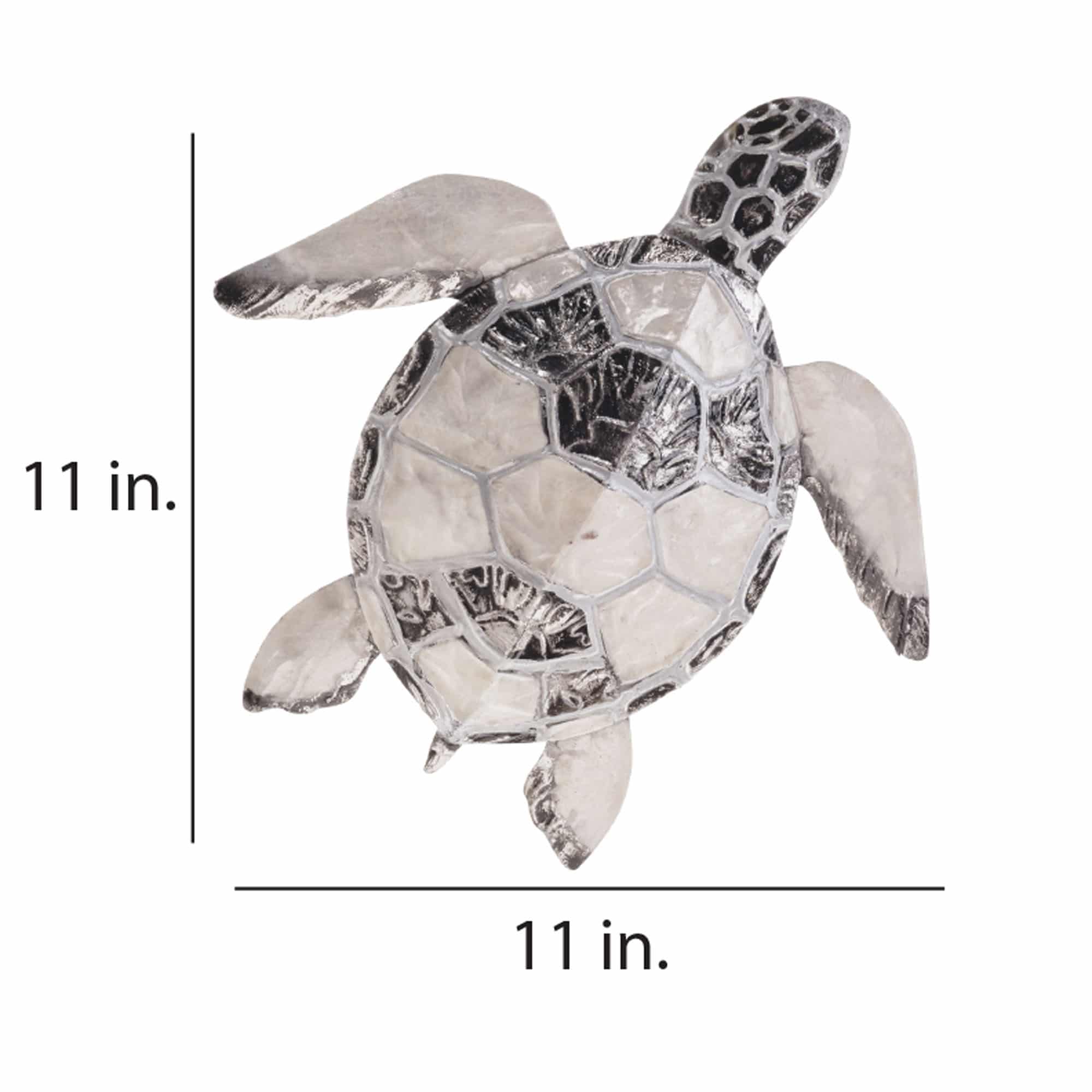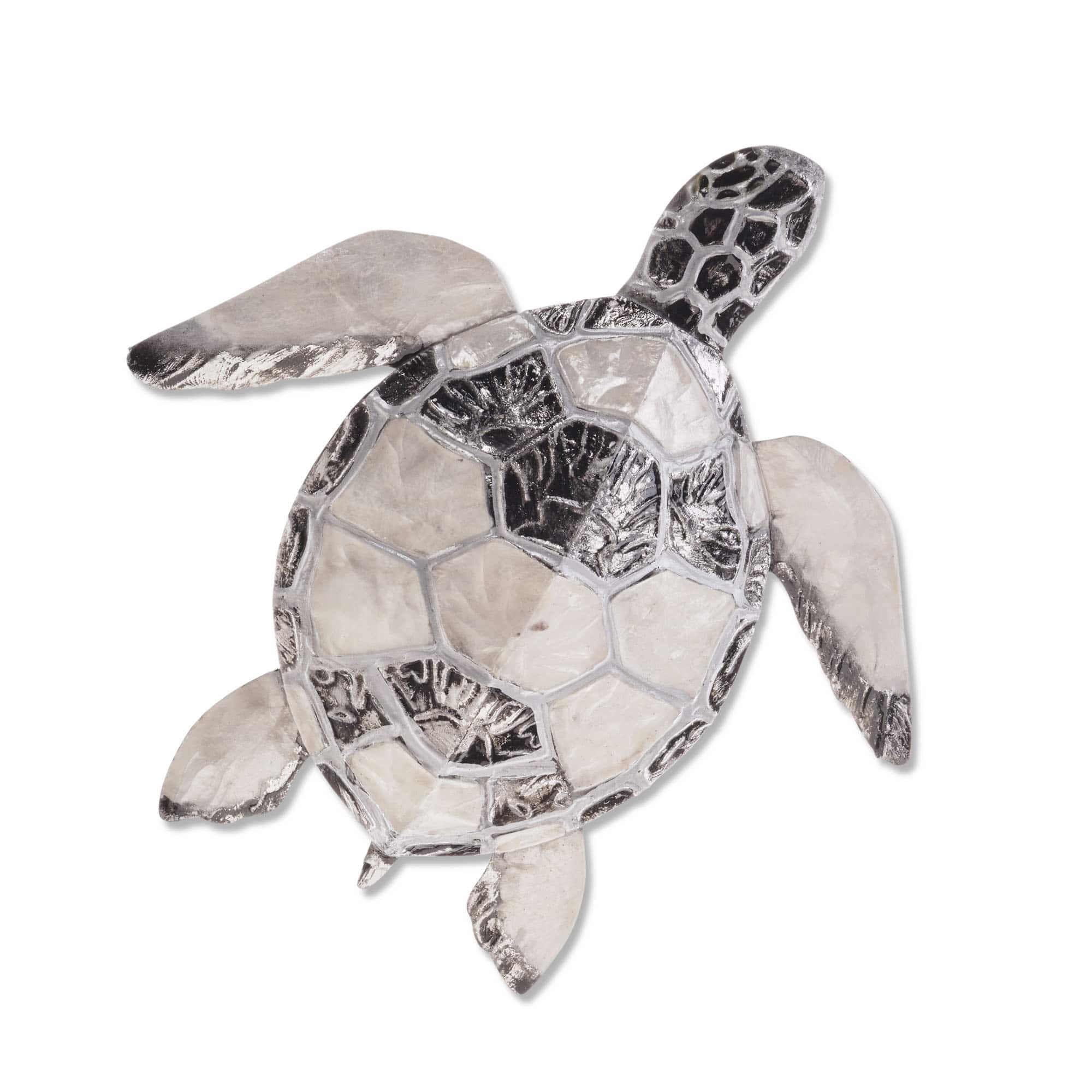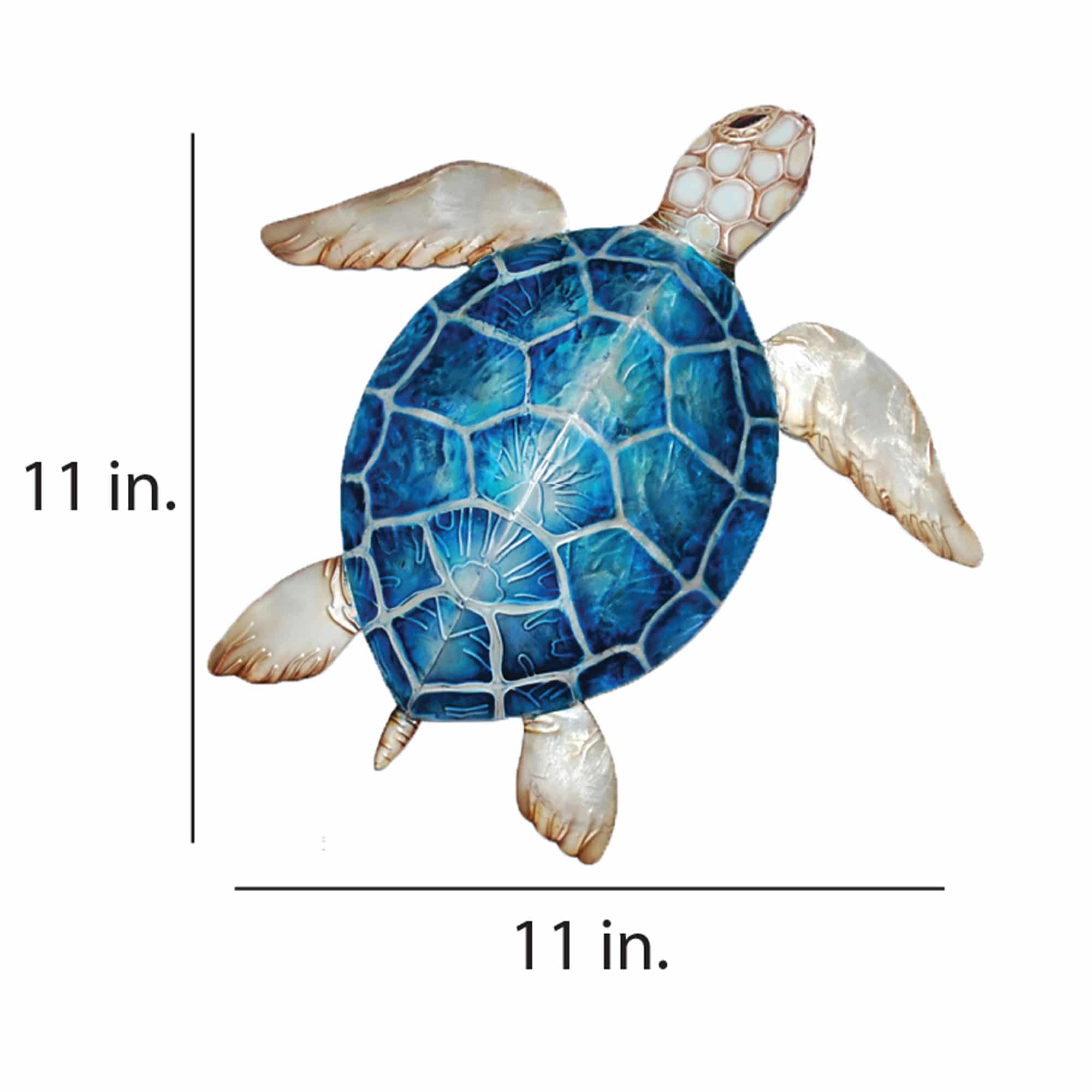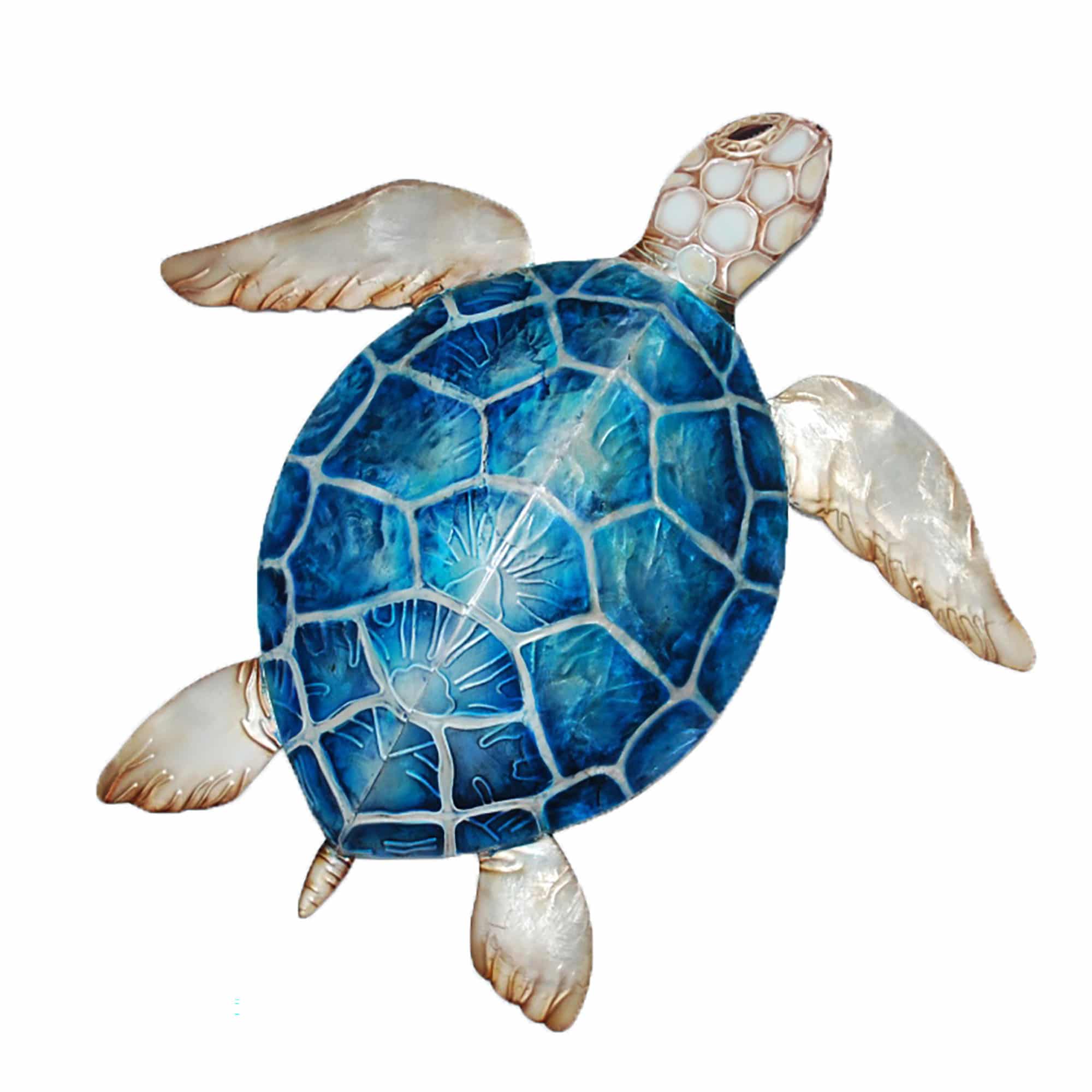This piece showcases a bright, blue body strong in aqua tones. The upper wings glisten from the inlay of shell work; each shell absorbing and reflecting light differently than its neighbor. The lower wings contrast with a softer, satin, blue finish. As added detail, the metal in the lower wing is pressed to represent the artist's view of the wing's components. Beads radiate from the center of the butterfly, almost making it feel as if this butterfly is transforming from a flower into its animal form.
The basic frame of the butterfly is created using tin, which is powder-coated with a black finish and makes this piece safe to use outdoors. The edges of the frame are reinforced using thicker tin wire. The front of this piece is adorned in areas with capiz shell, an oyster native to the Philippines, before being hand-painted and sealed with a water-based sealant. The primary purpose of this oyster to provide a source of food, however, the shell is a sustainable by-product that can be used for decoration. The capiz shell subtly replicates the reflective qualities of butterflies in nature. The entire piece is lightweight and has an eyelet in the back allowing it to be hung using a finishing nail, command strip, or a push pin. Due to it being a natural material, the organic colors of capiz come through as tans and browns underneath the paint.
